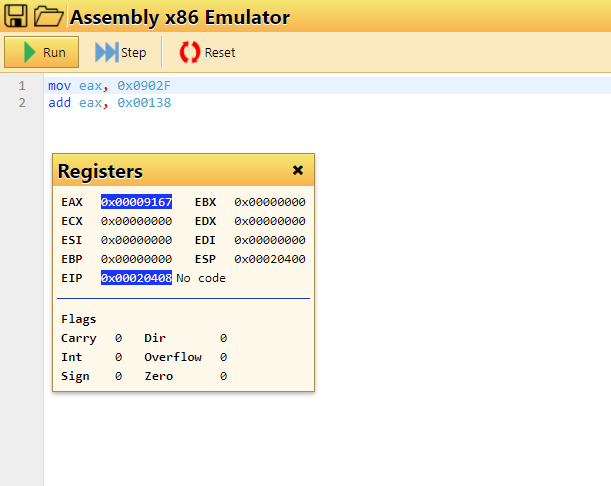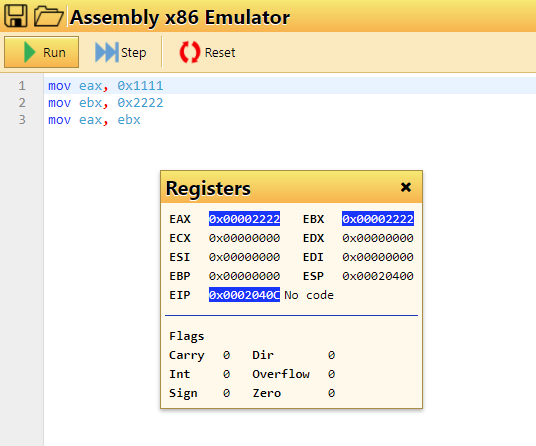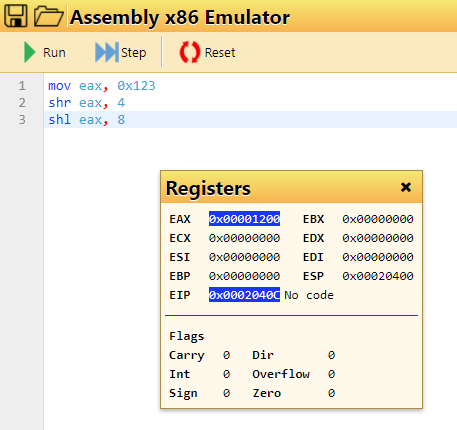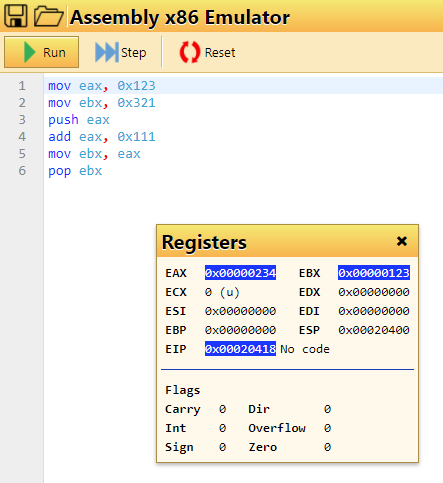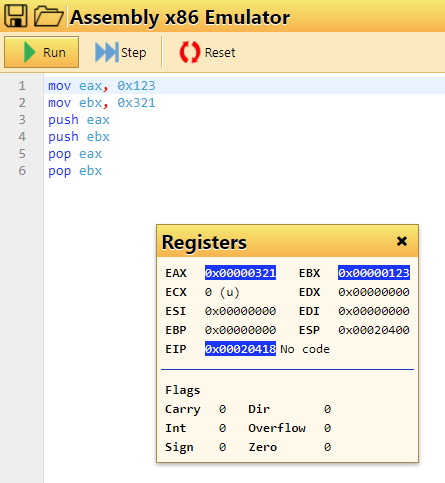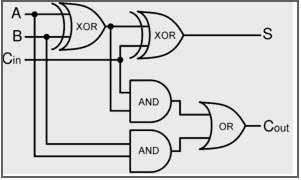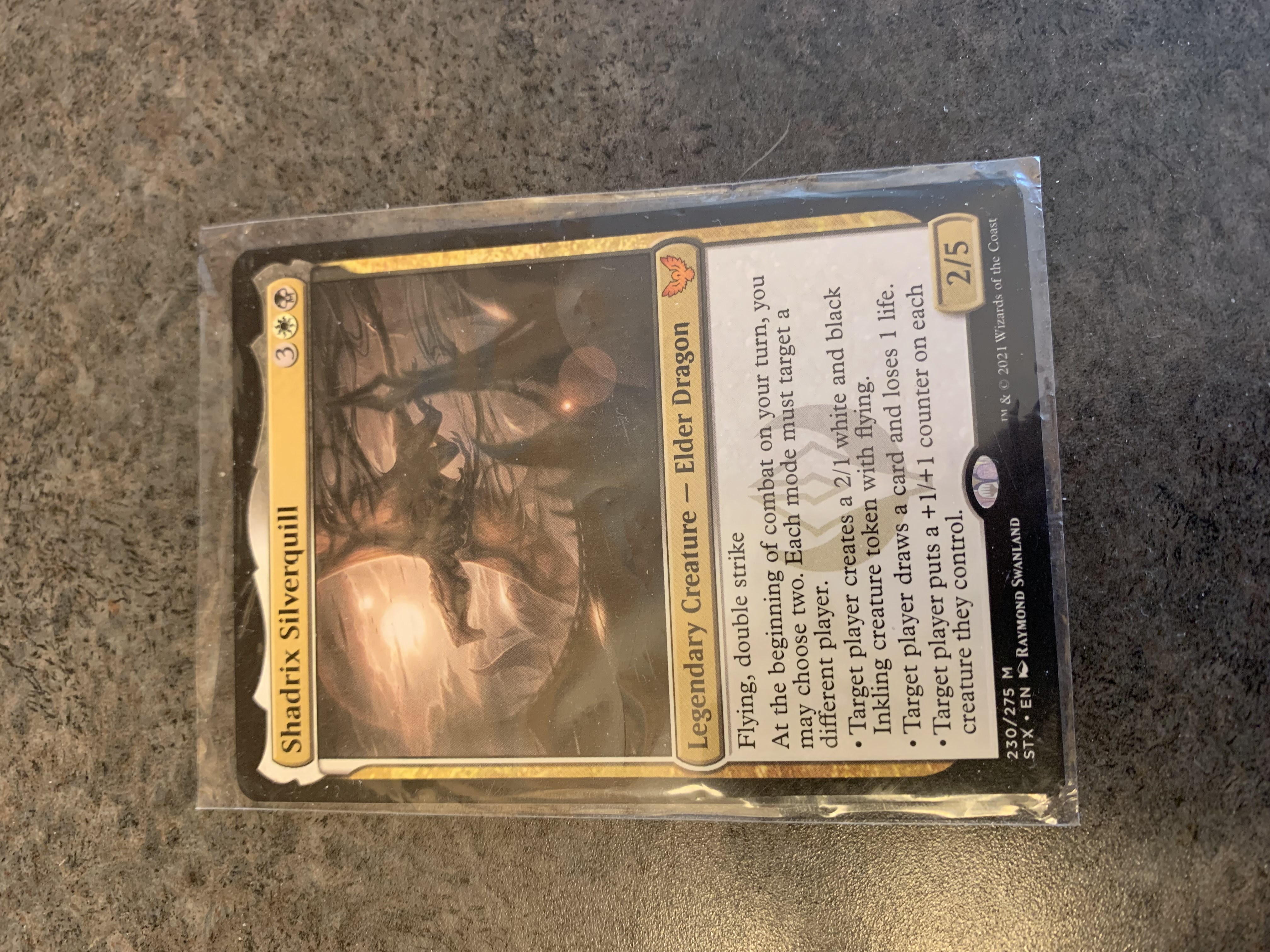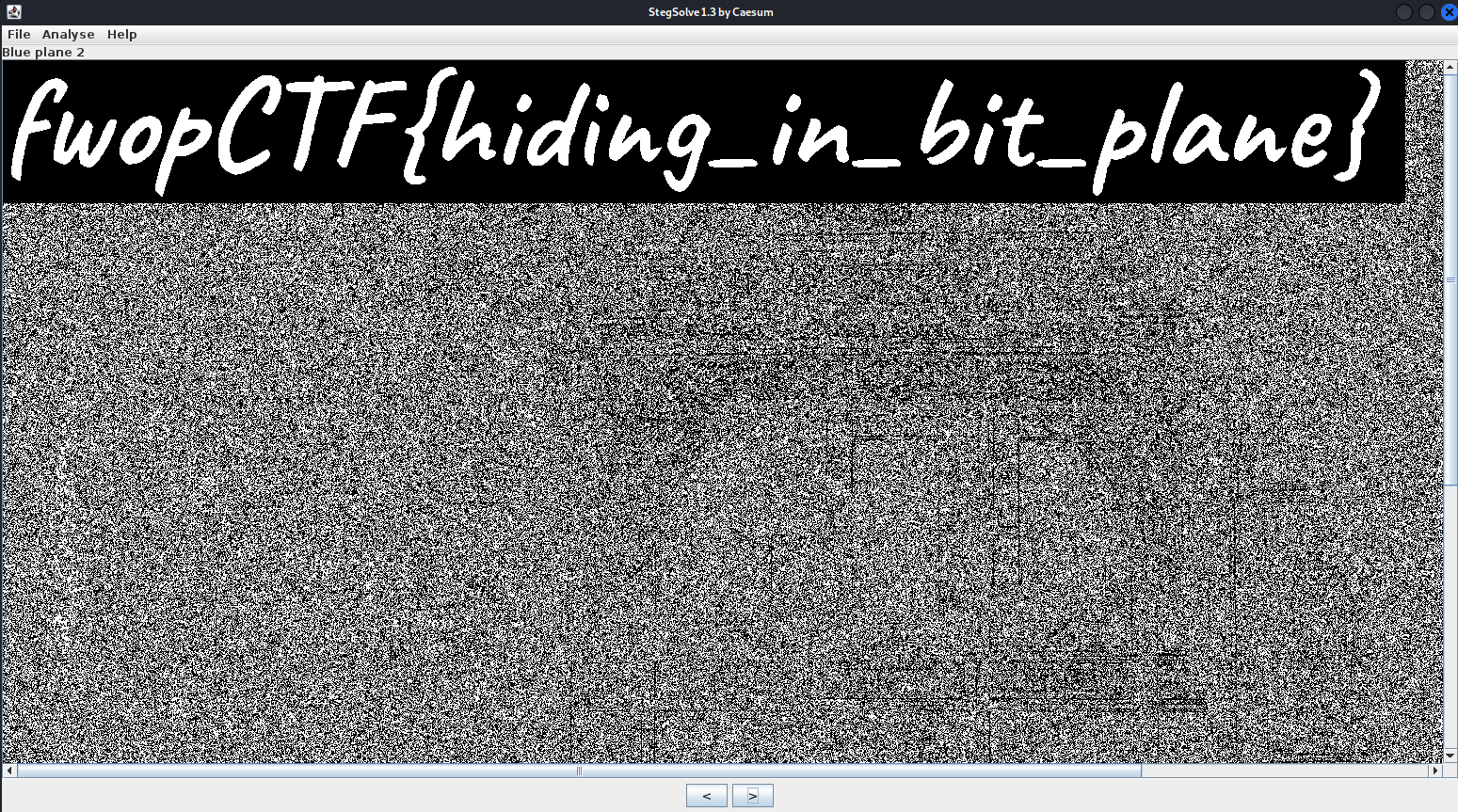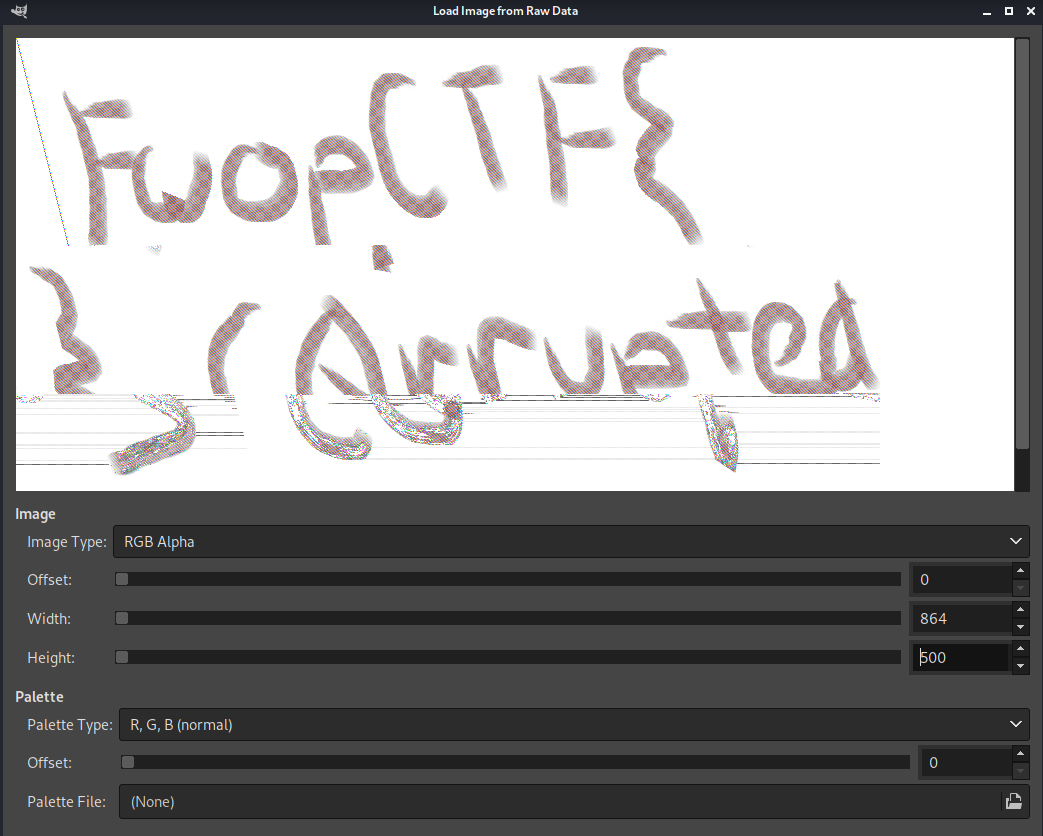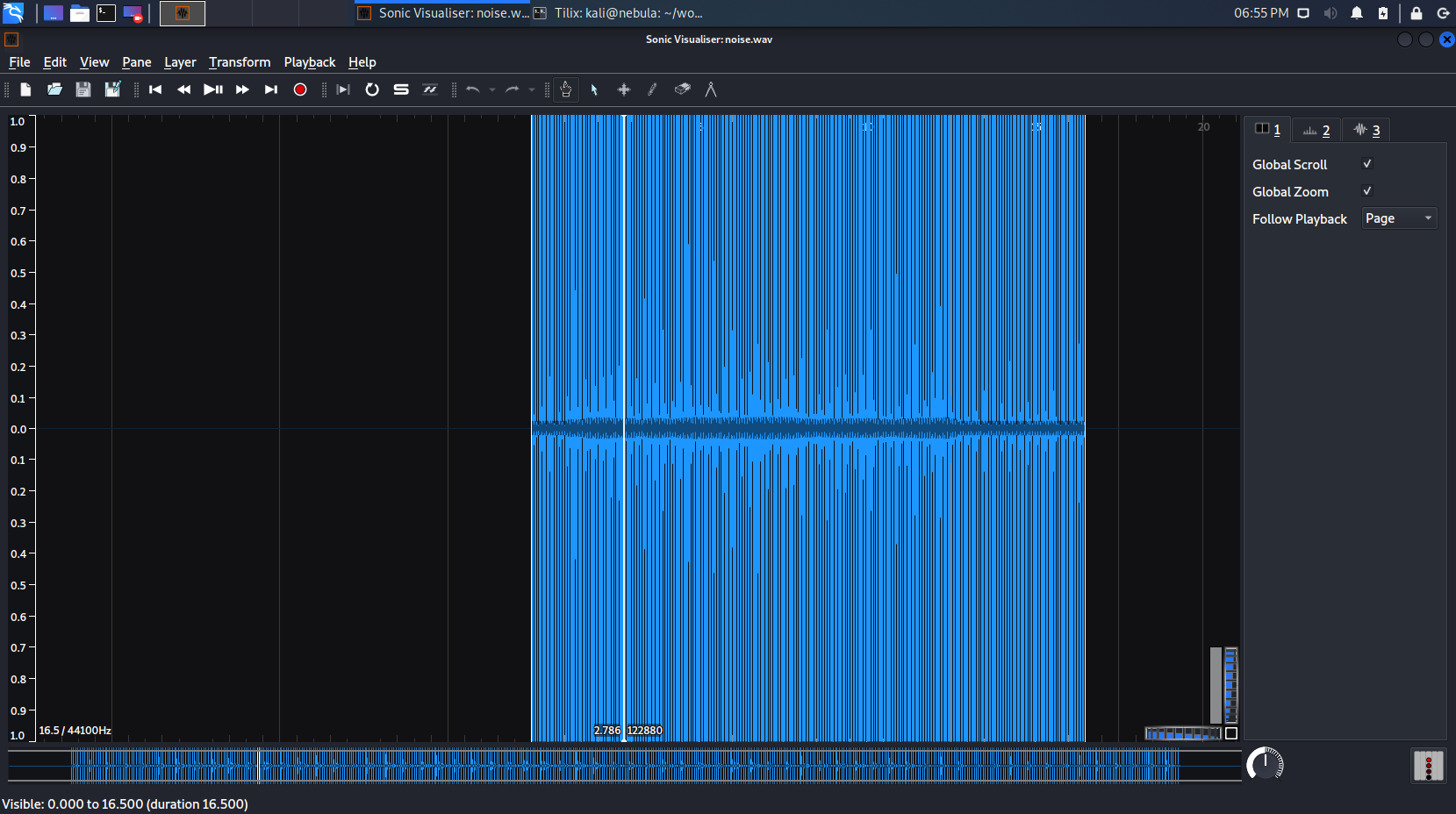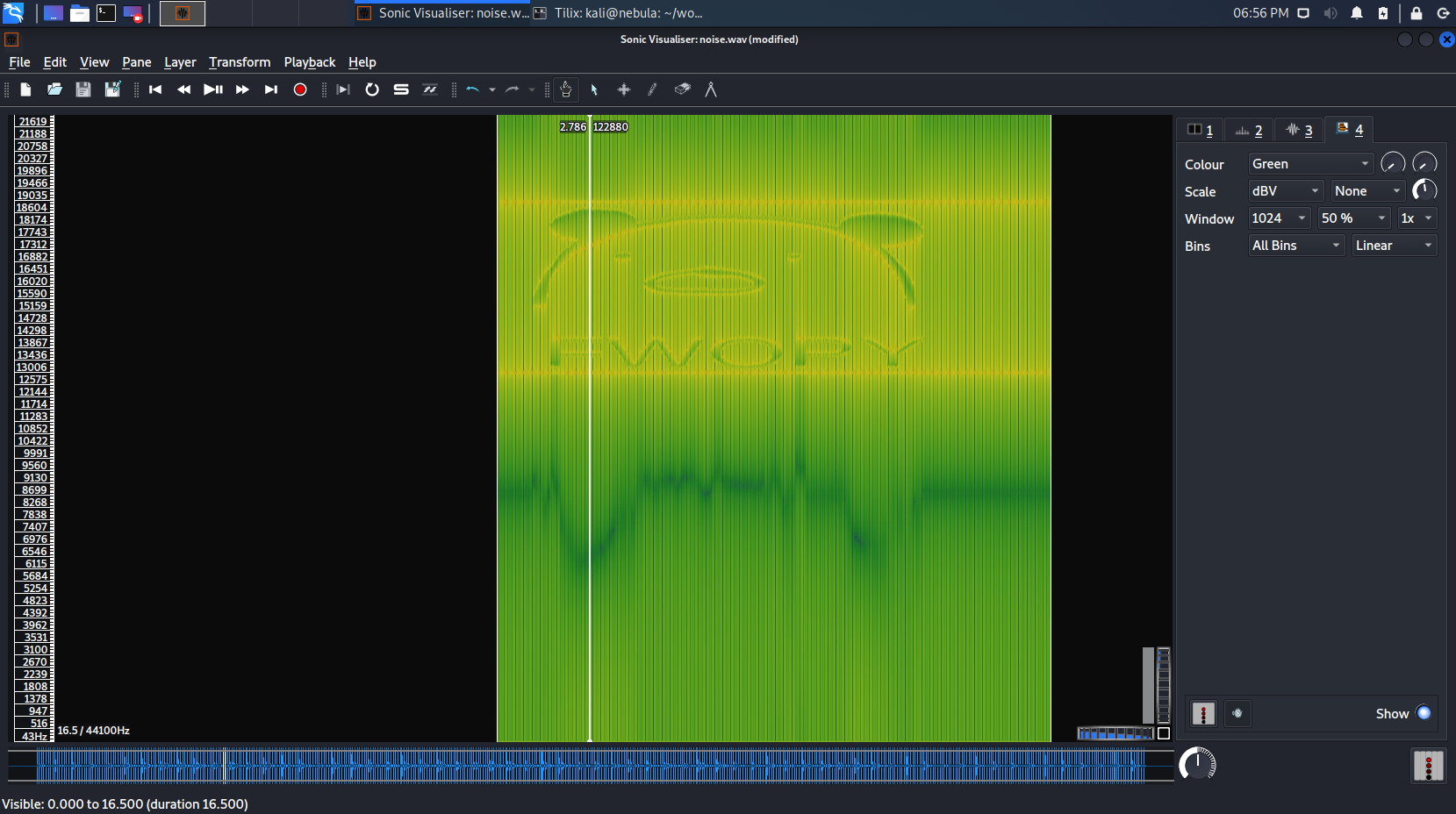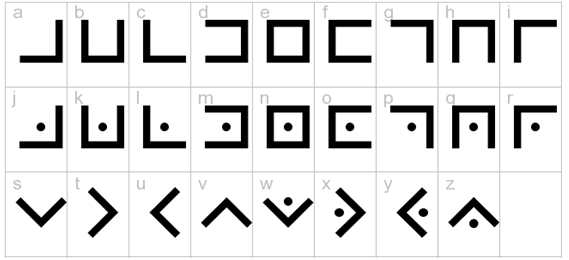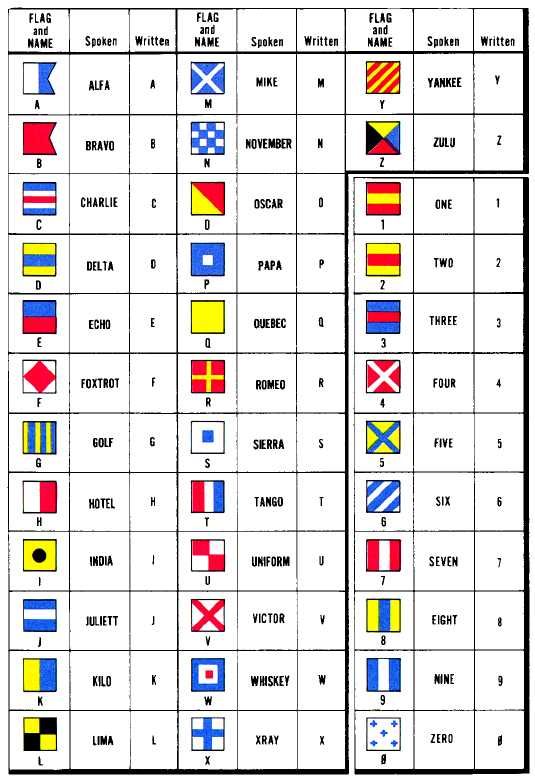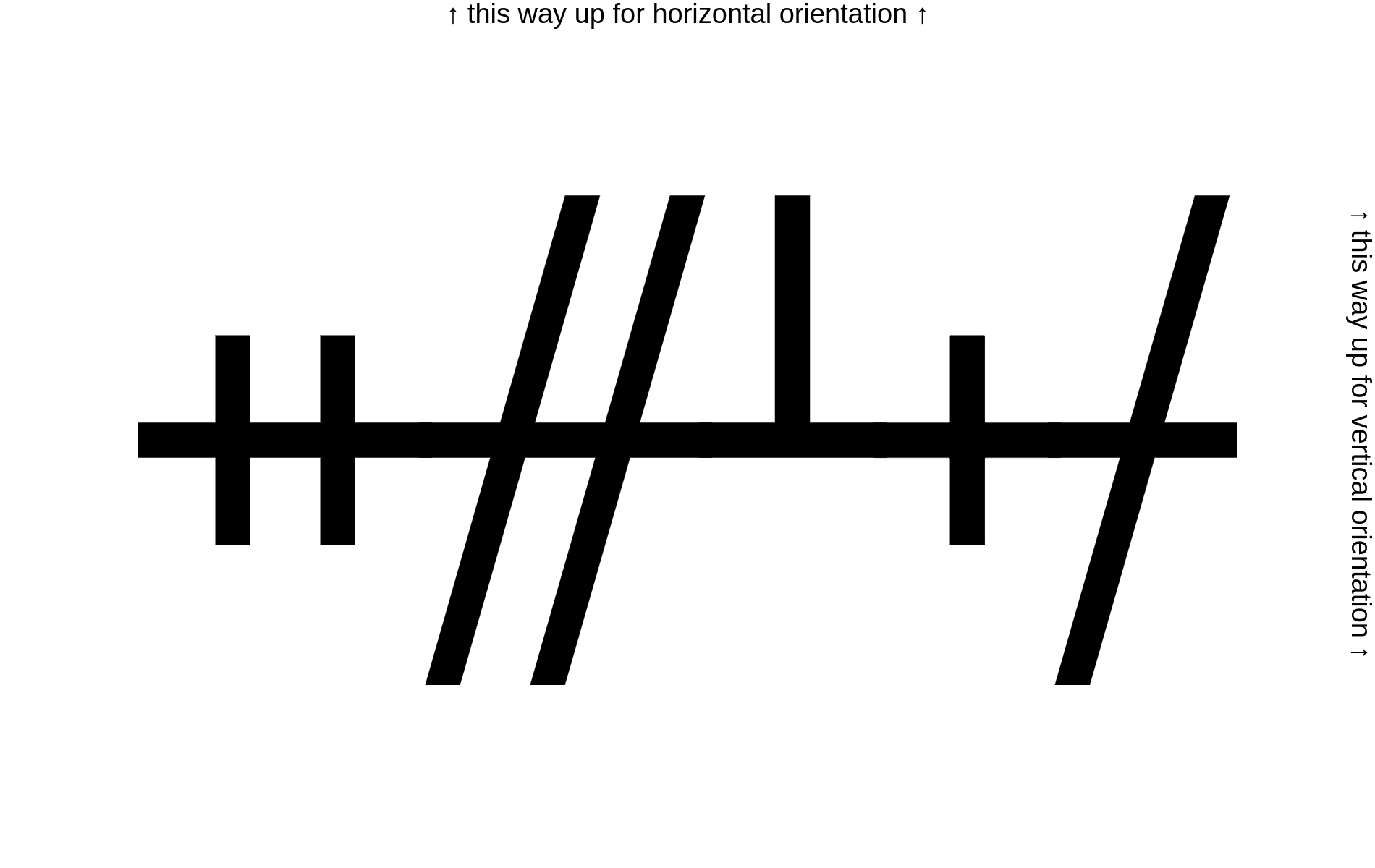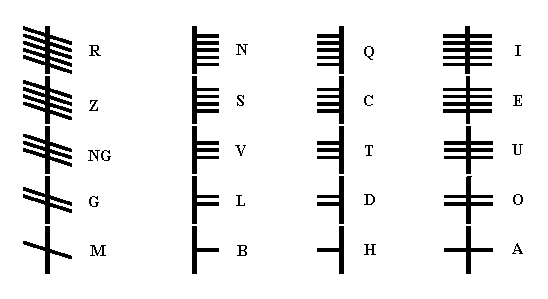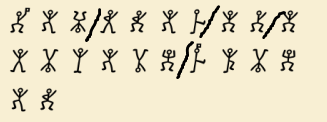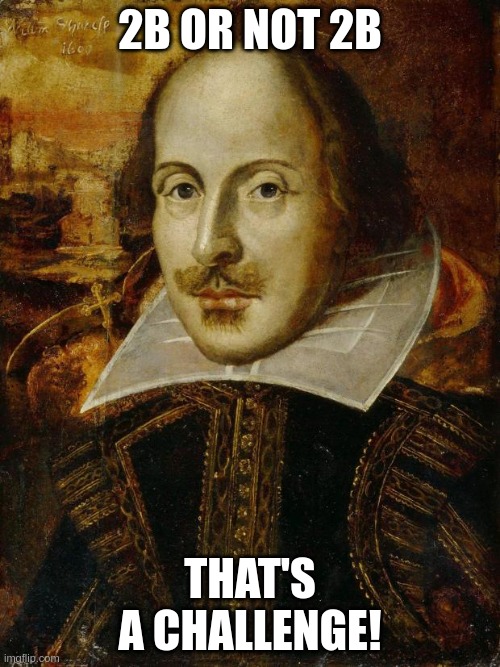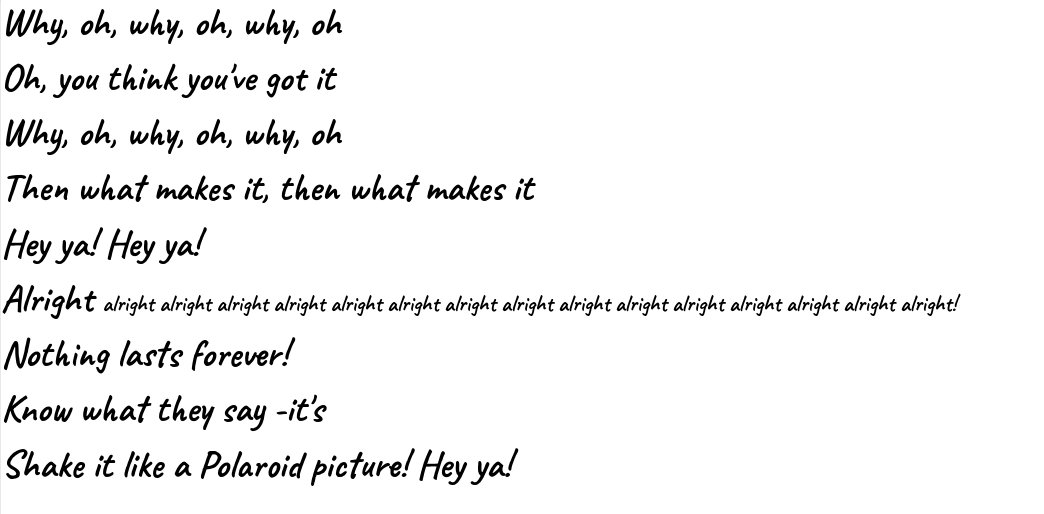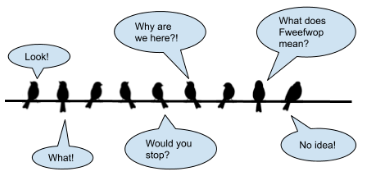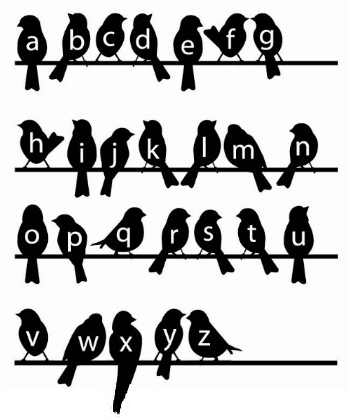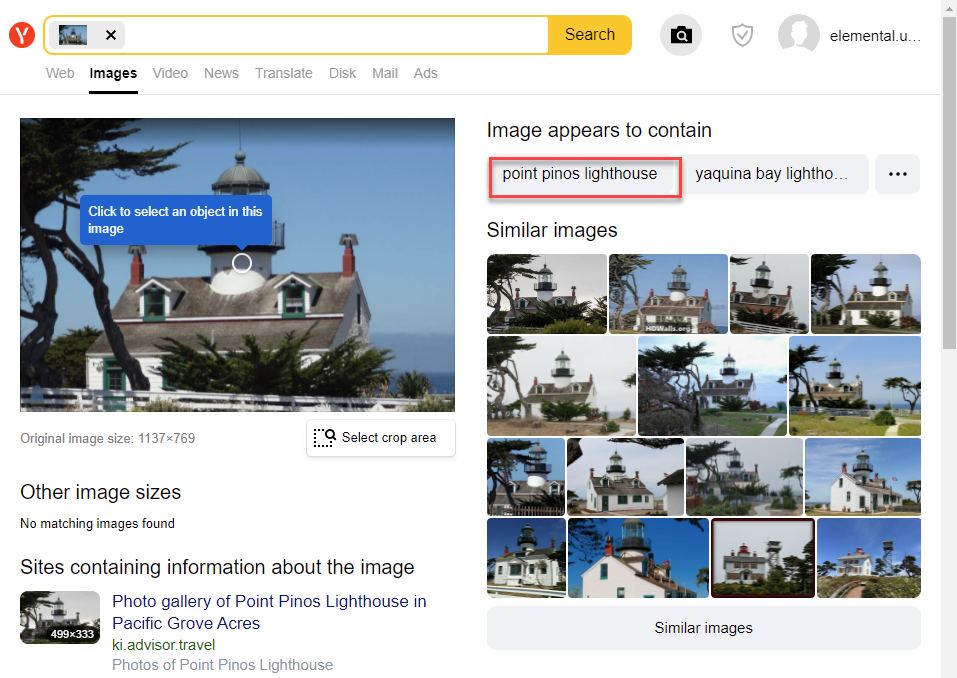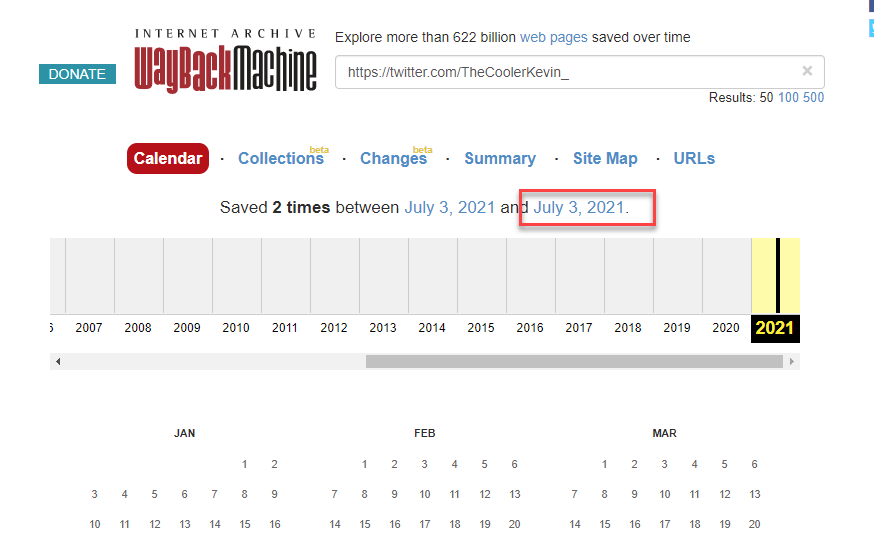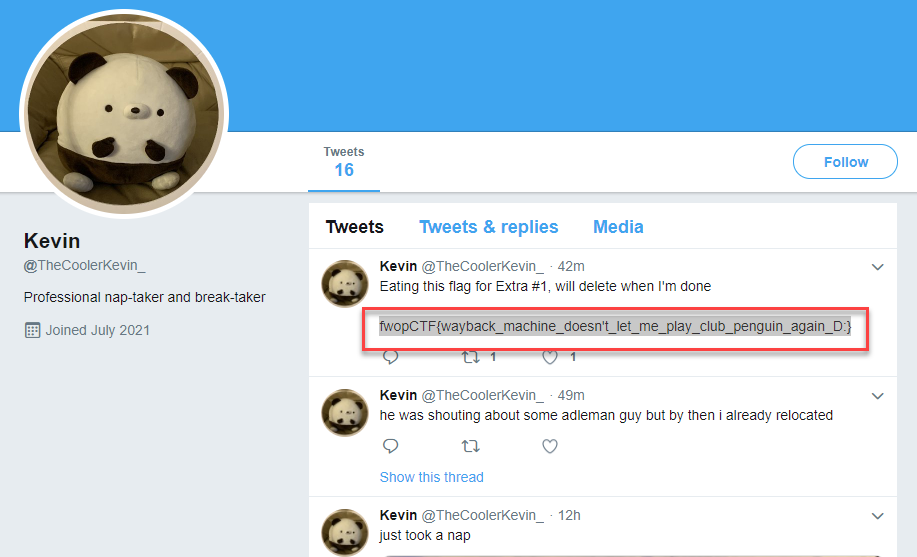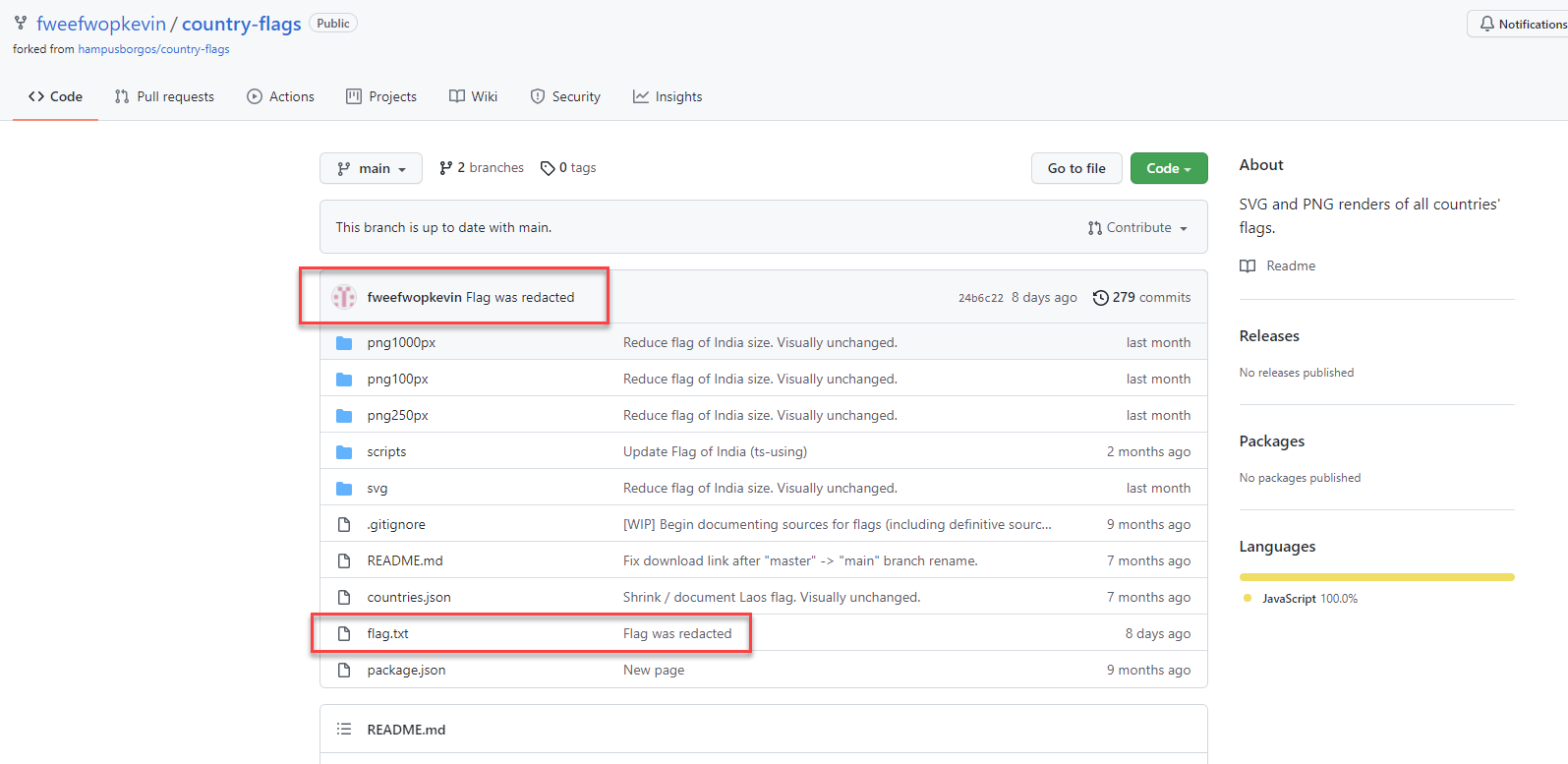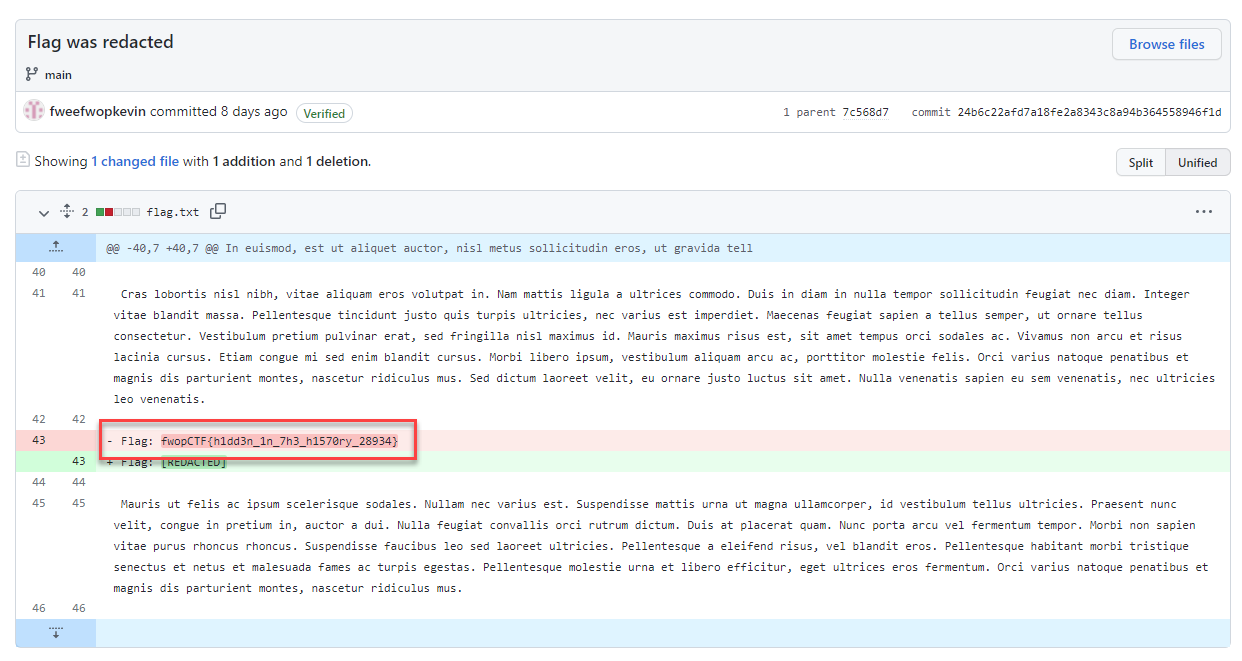- Crypto (complete)
- Forensics (complete)
- General (complete)
- Linux (complete)
- OSINT (complete)
- Reverse (complete)
- Web (complete)
These challenges are for general computing skills.
The flag is fwopCTF{this_is_the_flag}.
Enter it in the text box below and click "Submit" to enter the flag.
Unless indicated otherwise, all flags are wrapped with fwopCTF{}.
The flag is in the description
Flag: fwopCTF{this_is_the_flag}
What is 0xe8 in binary? (use 8 bits)
Use python interactive interpreter.
>>> f'{0xe8:0b}'
'11101000'
Flag: 11101000
What is the result of base64 encoding of "I love CTF"?
printf 'I love CTF' | base64Flag: SSBsb3ZlIENURg==
ZndvcENURntiYXNlNjRfaXNfZXZlcnl3aGVyZX0=
printf 'ZndvcENURntiYXNlNjRfaXNfZXZlcnl3aGVyZX0=' | base64 -dFlag: fwopCTF{base64_is_everywhere}
66 77 6f 70 43 54 46 7b 62 61 63 6b 5f 66 72 6f 6d 5f 68 65 78 7d
Convert from hex to ascii
pwn unhex 66 77 6f 70 43 54 46 7b 62 61 63 6b 5f 66 72 6f 6d 5f 68 65 78 7dFlag: fwopCTF{back_from_hex}
01100110 01110111 01101111 01110000 01000011 01010100 01000110 01111011 01100011 01101111 01101101 01110000 01101100 01101001 01100011 01100001 01110100 01100101 01100100 01111101
Convert from binary representation to ascii with python
x='01100110 01110111 01101111 01110000 01000011 01010100 01000110 01111011 01100011 01101111 01101101 01110000 01101100 01101001 01100011 01100001 01110100 01100101 01100100 01111101'
print( ''.join([ chr(int(i,2)) for i in x.split() ]) )Flag: 'fwopCTF{complicated}'
What's the language that is also called symbolic machine code?
Flag: assembly
Invite link. https://discord.gg/y2BXfQCgmN
The flag is on the #general channel
Flag: fwopCTF{fweefwop_ctf_go_go_go}
What's that thing translate human readable programs to executable machine code?
Flag: compiler
It is a kind of processes but tends to stay around for long time. They don't usually go away by themselves. It helps you and it haunts you. Sometimes, it answers the door for you if you knock the door with ssh. There are so many of them in any running computer. But you won't know where they go if you turn the computer off.
Flag: daemon
I'm a network device... wait! I know what you are thinking. I'm NOT a router. Routers do their job on layer 3 and dealing with IP address. I work similarily but on layer 2. Mac addresses are my things.
Flag: switch
If you disable me, ping won't work.
The flag is the abbrievation of my name, or the full name (4 words).
Flag: icmp
Compile the file to executable and run it.
Drop into https://rextester.com/l/nasm_online_compiler and run
Flag: fwopCTF{i_have_done_this_ex}
Use the same hello.asm from NASM (1). Change just one char so the output becomes fwopCTF{i_have_done_this_exercise}
What's the new char?
Change line 13 as below
- mov rdx, 0x13
+ mov rdx, 0x19
Produces a longer flag as required.
Flag: 9
Let's do some Modular Math!
3 * 6 = x (mod 7)
What's x?
Do the math.
(3*6)%7Flag: 4
Find x where
x * 11 = 46 (mod 59)
for x in range(100):
if (x*11)%59 == 46:
print(x) Flag: 31
What's the smallest x such that
x*x = 2 (mod 607)
for x in range(10000):
if (x**2)%607 == 2:
print(x) Flag: 194
What's the smallest positive integer p such that 5^p mod 7001 = 1?
Here ^ is the power function.
for x in range(10000):
if (5**x)%7001 == 1:
print(x) Flag: 3500
What's the answer of (31 ^ (31 ^ 2813771283)) % 384302 where ^ is the power operation, % is the modular operation.
In Python, the expression is equivalent to pow(31, pow(31, 2813771283)) % 384302.
Run the equation provided in wolfram to get the answer
(31^(31^2813771283)) mod 384302
This can also be passed via the python API wolframalpha
import wolframalpha
API_KEY = '<my_api_key>'
client = wolframalpha.Client(API_KEY)
resp = client.query('(31^(31^2813771283)) mod 384302')
flag = next(resp.results).subpod.plaintext
print(flag)This solve was provided by @Happysaur (CTF admin) on discord
outer_mod = 384302
middle_mod = 0
for i in range(2,outer_mod):
if pow(31,i,outer_mod) == 1:
middle_mod = i
break
assert(middle_mod!=0)
flag = pow(31,pow(31,2813771283,middle_mod),outer_mod)
print(flag) Flag: 278505
What do you get by XORing every character in gvnqBUGzyns^stmdr| with hex value 01.
''.join([ chr( ord(i) ^ 0x01 ) for i in "gvnqBUGzyns^stmdr|" ])Flag: fwopCTF{xor_rules}
mov eax, 0x0902F
add eax, 0x00138
After the above code is executed, what's the value (in decimal) in EAX?
0x9167Flag: 37223
mov eax, 0x1111
mov ebx, 0x2222
mov eax, ebx
After stepping through the 3 lines, what's the value in EBX in decimal?
0x2222Flag: 8738
mov eax, 0x123
shr eax, 4
shl eax, 8
What do you have in EAX after running these instructions? The flag of the format 0x????... where the number has no leading zeros.
Flag: 0x1200
To reset (set content value to 0) the register rax , you can do
move rax, 0x0
But there is also a more efficient way to do the same. It looks like
??? rax, rax
What's the operator mnemonics (instruction) that can set rax to 0?
Googling shows that its xor
Flag: xor
mov eax, 0x123
mov ebx, 0x321
push eax
add eax, 0x111
mov ebx, eax
pop ebx
What's the hex value of ebx at the end? Enter flag in the format of 0x???? where the hex value contains no leading 0s.
Flag: 0x123
mov eax, 0x123
mov ebx, 0x321
push eax
push ebx
pop eax
pop ebx
What's the hex value of ebx at the end? The flag is in the form or '0x???' with no leading 0s.
Flag: 0x123
There is a bug in this program so it won't compile. Please fix the bug and get the flag.
global start
section .text
_start: mov eax, 0x100
mov ebx, 0x200
xor ecx, ecx ; What does this do?
cmp eax, ebx
jle label1
cmp eax, 0x100
je label2
cmp ebx, 0x200
jne label3
mov edx, message1
jmp print
label1:
mov edx, message2
jmp print
label2:
mov edx, message3
jmp print
label3:
mov edx, message4
print:
mov eax, 1 ; system call for write
mov edi, 1 ; file handle 1 is stdout
mov esi, edx ; address of string to output
mov edx, 0x0d ; number of bytes
syscall ; invoke operating system to do the write
exit:
mov rax, 60 ; system call for exit
xor rdi, rdi ; exit code 0
syscall ; invoke operating system to exit
section .data
message1: db "fwopCTF{fwee}", 10
message2: db "fwopCTF{fwop}", 10
message3: db "fwopCTF{flee}", 10
message4: db "fwopCTF{foop}", 10
Fix the code at line 34
- mov edx, 0x0?
+ mov edx, 0x0d
Flag: fwopCTF{fwop}
if A, B, and Cin all equal to 1. What's the value of S?
Looking at the diagram the left most XOR gate is not triggered as both A and B are 1. C then triggers the XOR gate of S therefore the value of S is 1.
Flag: 1
#include <stdio.h>
int main() {
printf("Hello, World!");
return 0;
}
Flag: c
fn main() {
println!("Hello World!");
}
Flag: rust
package main
import "fmt"
func main() {
fmt.Println("hello world")
}
Flag: go
PROGRAM Triangle
IMPLICIT NONE
REAL :: a, b, c, Area
PRINT *, 'Welcome, please enter the&
&lengths of the 3 sides.'
READ *, a, b, c
PRINT *, 'Triangle''s area: ', Area(a,b,c)
END PROGRAM Triangle
FUNCTION Area(x,y,z)
IMPLICIT NONE
REAL :: Area ! function type
REAL, INTENT( IN ) :: x, y, z
REAL :: theta, height
theta = ACOS((x**2+y**2-z**2)/(2.0*x*y))
height = x*SIN(theta); Area = 0.5*y*height
END FUNCTION Area
Flag: fortran
IDENTIFICATION DIVISION.
PROGRAM-ID. FweefwopProgram.
PROCEDURE DIVISION.
DisplayPrompt.
DISPLAY "Fweefwop Wins!".
STOP RUN.
Flag: cobol
(defun fibonacci(n)
(cond
((eq n 1) 0)
((eq n 2) 1)
((+ (fibonacci (- n 1)) (fibonacci (- n 2))))))))
Flag: lisp
10 LET N=10
20 FOR I=1 TO N
30 PRINT "FweeFwop is FweeFwoping"
40 NEXT I
Flag: basic
size([],0).
size([H|T],N) :- size(T,N1), N is N1+1.
Flag: prolog
let sv (h:t) = p : sv (filter (\x -> x `mod` h /= 0) t) in sv [2..]
Flag: haskell
This series focuses on retrieving data from other data.
Chapter One of Alice in Wonderland we're diving into the rabbit hole.
Running strings on the file shows the flag at the end of the file.
...snip...
]hWP&
jc#k
=7g&
mjx/
s\]|."Ue
\qZf
Here is a flag "fwopCTF{Beneath_the_surface}".Flag: fwopCTF{Beneath_the_surface}
What's in the file?
Use zcat to extract and print in one command
zcat flag.txt.gzFlag: fwopCTF{ok_you_found_me}
The fourth wall shatters, along with your expectations of this problem.
The flag is in the image description. How can you view it?
Use exiftool to extract and print in one command
exiftool meta_00.jpg | grep -i image\ descriptionFlag: fwopCTF{metadata_is_funky}
Why I don't see anyting useful in this text file?
Looking at the header of the file we can see that it is infact a PNG file.
$ cat fflag.txt | xxd | head
00000000: 8950 4e47 0d0a 1a0a 0000 000d 4948 4452 .PNG........IHDR
00000010: 0000 0195 0000 0026 0806 0000 000c 7206 .......&......r.
00000020: 5400 0000 0173 5247 4200 aece 1ce9 0000 T....sRGB.......
00000030: 18ca 4944 4154 785e eddd 05d4 6655 d507 ..IDATx^....fU..
00000040: f003 4849 97a4 8484 8020 dda2 80a0 7483 ..HI..... ....t.
00000050: 8128 2dd2 2182 20a2 944a aa74 8774 4a28 .(-.!. ..J.t.tJ(
00000060: 2018 7487 20a1 742a 25a1 1252 aedf fdbe .t. .t*%..R....
00000070: 3d1c eedc 27de f7b9 6fcc ccdd 6bb1 9899 =...'...o...k...
00000080: e7de 13fb ecb3 ffbb ceb9 637d f0c1 071f ..........c}....
00000090: a486 1a0e 341c 6838 d070 a0e1 400d 1c18 ....4.h8.p..@...Change the extension and open it with a photo viewer application.
Flag: fwopCTF{actually_an_image}
Read deep into the eyes, what do you see?
Looking at the metadata for the file with exiftool shows nothing.
strings also shows nothing of value either.
Analysing with binwalk shows no additional data.
Using zsteg finds the flag hidden in byte 1 of the RGB profile working with the least significant bit.
$ zsteg husky.png
b1,r,lsb,xy .. text: "7U>c[rvyzrfM\""
b1,rgb,lsb,xy .. text: "fwopCTF{r34d1ng_b37w33n_7h3_by73s}/"
b1,abgr,msb,xy .. text: "[U[wwyUU"
b3,b,lsb,xy .. text: "?rc%Gw'["
b3,rgb,lsb,xy .. file: PGP Secret Key -
b3,rgba,lsb,xy .. file: PGP Secret Key -
b4,r,lsb,xy .. text: "wxfveD#0"
b4,g,lsb,xy .. text: "TETETffx"
b4,b,lsb,xy .. text: "fwvB34\"TC "
b4,rgba,lsb,xy .. text: "O`/`/q_`O`O_?N/N"Flag: fwopCTF{r34d1ng_b37w33n_7h3_by73s}
They are not the same if you look carefully.
Reviewing the length of the files they are the same length at 10000 lines each. Running a diff between them shows the flag.
diff -U1 t* | egrep '^-' | cut -d'-' -f2 | tr -d '\n'Flag: fwopCTF{r3sp3ct_th3_d1ff}
There is a flag in the file.
The file provided is base64 encoded. Decoding it provides a PNG image. Write the PNG to a file then open it.
Flag: fwopCTF{this_is_a_boring_flag}
What is pictured in the image hidden inside this image?
Using zsteg -a provides back a file at the profile b1,rgb,lsb,xy.
$ zsteg -a green_apple.png
b1,rgb,lsb,xy .. file: PNG image data, 480 x 66, 8-bit/color RGBA, non-interlaced
b1,rgba,lsb,xy .. file: PGP Secret Key -
b2,r,msb,xy .. text: "w_wuWwu_w"
b2,b,msb,xy .. text: "U]UUuUU]UWU"
...snip...Extract this file
zsteg --extract=b1,rgb,lsb,xy green_apple.png > green_sub.pngThe flag is the image.
Flag: fwopCTF{apple_core_of_course}
Shiba may not tell you the flag, but you can still follow her direction.
Using zsteg -a provides back a line with this text
b1,rgb,lsb,xy .. text: "No flag here, but you can check out https://imgur.com/gallery/jCJcbzZ "
Browsing to that address has another image hosted on that site. Downloading the image with this link for analysis
https://i.imgur.com/0yEJ1HH.png
Run this new image through zsteg -a to get the flag with profile b1,rgb,lsb,xy
Flag: fwopCTF{steg_is_fun}
After killing this guy in minecraft, he sent me this strange link! I can't figure out how to decipher it, can you?
https://tinyurl.com/easilypranked
Remember to put in fwopCTF{} format.
The link eventually, through redirects, takes you to a "Rick-Rolling" (TM pending).
The flag is the URI (without the leading '/') of the base link.
Flag: fwopCTF{easilypranked}
What is in this image?
Using zsteg finds the flag with profile b1,rgb,lsb,xy.
Flag: FwopCTF{ThisIsSoMuchFun}
Apples and __________
Taking the image and running it through steghide with the password oranges provides secret.txt. The password was guessed from the name of the challenge having oranges in it but the description missing it.
steghide extract -sf apple.jpg
Enter passphrase:
wrote extracted data to "secret.txt".Open the file secret.txt to view the flag.
Flag: fwopCTF{which_is_your_favorite}
The message is not carved on the wood. It's deeper in the color.
Assessing the image with tools like zsteg, foremost, and binwalk show nothing. This leads me to believe that it must be something that has edited the actual image itself.
Using stegsolve (http://www.caesum.com/handbook/Stegsolve.jar) we are able to view the image in differet ways, includeing bit planes for colours. The place that was hiding the flag was Blue 2
Flag: fwopCTF{hiding_in_bit_plane}
Uncorrupt this file to discover the secret message hidden within.
Note: there was an easier way to solve this but hexeditor and bless kept crashing on me so ive done it this way
Use binwalk on the file to get a zlib file.
binwalk -e corrupted_flag.pngExtract the zlib archive
printf "\x1f\x8b\x08\x00\x00\x00\x00\x00" |cat - 5B.zlib |gzip -dc >5B.uncompressedLink to it with the .data extension.
ln -s 5B.uncompressed 5B.dataOpen with gimp
gimp 5B.dataAdjust the following parameters:
| Image Type | Width | Height |
|---|---|---|
| RGB Alpha | 864 | 500 |
This should be the presented picture with the flag present.
Flag: fwopCTF{c0rrupted}
This solve was the intended solution but hexedit and bless were not working for me so i didnt do it this way. I later used the following to get a beter view of the flag
Viewing the header of the file we can see that it is missing the PNG header.
xxd c.png| head
00000000: 8924 0032 0d0a 1a0a 0000 0012 4948 4452 .$.2........IHDR
00000010: 0000 0480 0000 0288 0802 0000 0087 4916 ..............I.
00000020: 5a00 0000 0173 5247 4200 aece 1ce9 0000 Z....sRGB.......
00000030: 0004 6741 4d41 0000 b18f 0bfc 6105 0000 ..gAMA......a...
00000040: 0009 7048 5973 0000 0ec3 0000 0ec3 01c7 ..pHYs..........
00000050: 6fa8 6400 00ff a549 4441 5478 5eec fdf7 o.d....IDATx^...
00000060: 975d 4596 ed8f bebf e7fd f0ee 78df eedb .]E.........x...
00000070: befb 5677 97af eaaa 2e43 0105 4541 611a ..Vw.....C..EAa.
00000080: 7381 c2db c214 0284 9140 42de 2390 8490 s........@B.#...
00000090: 37c8 7ba5 3cf2 1232 29ef bdb7 48e4 fe7e 7.{.<..2)...H..~If we add the required PNG header (89 50 4e 47 0d 0a 1a 0a 00 00 00 0d) in place of the corrupt data at the first 12 bytes we get a readable PNG.
$ dd bs=12 skip=1 if=Corrupt_image.png of=data
$ pwn unhex 89 50 4e 47 0d 0a 1a 0a 00 00 00 0d | cat - data > new.png
$ xdg-open new.pngThe image will have the flag.
I keep hearing this song in some videos, can you help me find the name?
Flag format: fwopCTF{(song name)(song's full artist's name)} Do not put any spaces in the flag.
Example: Whatever It Takes by Imagine Dragons Flag: fwopCTF{whateverittakesimaginedragons}
Assessing the file there is no metadata found with exiftool or ffmpeg.
Using shazam and listening to the song provides the information about the track.
Flag: fwopCTF{shoptobyfox}
Our newbie secrete agent doesn't know any encryption. So he just smashed his message and scrumble the pieces, just to fool our enemy. We are not sure it would work, but we need to get the message out anyway. Please help!
Split on tuple separators then sort by int then get unique values and finally remove new lines
$ zcat smashed.txt.gz | sed -E "s/\), \(/\n/g" | sort -k2 -n test | uniq | cut -d"'" -f2 | tr -d '\n'
TheFweefwopCyberSecurityTeamishonoredtohaveyouparticipateourfirstCTF.\nWesincerelyhopeyouhadfunandlearnedsomethinguseful.Oh!theflagis\nfwopCTF{kirby_is_the_best_in_super_smash_bros_change_my_mind}Flag: fwopCTF{kirby_is_the_best_in_super_smash_bros_change_my_mind}
Our cyber secret special undercover agent intersepted a cryptocurrency transaction log. The first thing we want to know is how many transactions are there?
Download the file and uncompress.
gunzip transactions.json.gzThe challenge wants the total number of transactions. Can we use wc
cat transactions | wc -l
cat transactions | wc -c No. It returns 0 for lines but 3657079 for characters. Running head with a char limit of 100 returns
$ head -c 100 transactions.json
[{"quantity": 12.53, "src_addr": "1D9Tagw8NWdG63XE5Sy8PsGHxtEyVJWQrg", "dest_addr": "1Q5bKCUoiJqxTawSo it appears that the json is a single line. Okay, lets parse it with python. Creating a pythong script to solve this we can load in json module as we know its json data. Load in the file and count the elements for the flag.
import json
# read in data
data = open('./transactions.json').read()
# parse data as json to object
j = json.loads(data)
# print length
print(len(j))Run the script and the length will be output. Use this length value as the flag.
This could have also been solved with a single python line or jq.
# python
python3 -c 'import json; print(len(json.load(open("./transactions.json"))))'
# jq
jq length transactions.jsonFlag: 20000
Use the same log file from Bitcoin Laundering (0).
We are particular interested in an address 16ftSEQ4ctQFDtVZiUBusQUjRrGhM3JYwe. Could you sum up all the quantity of Bitcoin the address has received (the address as dest_addr)?
Following on from the last challenges script we make some modifications to test against the required elements to get a list of elements.
- dest_addr = '16ftSEQ4ctQFDtVZiUBusQUjRrGhM3JYwe'
- currency = 'Bitcoin'
import json
# read in data
data = open('./transactions.json').read()
# parse data as json to object
j = json.loads(data)
# set target address
target_addr = '16ftSEQ4ctQFDtVZiUBusQUjRrGhM3JYwe'
# total values
total = 0
# loop over transactions as t
for t in j:
if t['cryptocurrency'].lower() == 'bitcoin' and t['dest_addr'] == target_addr:
total += t['quantity']
# print length
print(total)The output is the flag.
This could also be solved with one line of python
sum( [ i['quantity'] for i in json.load(open('./transactions.json')) if i['dest_addr'] == '16ftSEQ4ctQFDtVZiUBusQUjRrGhM3JYwe' and i['cryptocurrency'].lower() == 'bitcoin' ])Flag: 63382.93
Kevin is dreaming
There is a hint on this challenge for a walkinh bin - hinting at the binary binwalk.
Using that knowledge we run binwalk on the jpeg
$ binwalk kevin_zzz.jpg
DECIMAL HEXADECIMAL DESCRIPTION
--------------------------------------------------------------------------------
0 0x0 JPEG image data, JFIF standard 1.01
2227057 0x21FB71 PNG image, 1147 x 1147, 8-bit/color RGB, non-interlaced
2227116 0x21FBAC Zlib compressed data, default compression
2308197 0x233865 JPEG image data, JFIF standard 1.01This shows that there is more than just the image that we can see when opening the file. Lets extract this data
$ binwalk --dd=".*" kevin_zzz.jpgNext we move into the extracted file directory and check the file types of the extracted data
$ cd _kevin_zzz.jpg.extracted
$ file *
0: JPEG image data, JFIF standard 1.01, resolution (DPI), density 72x72, segment length 16, progressive, precision 8, 3024x4032, components 3
21FB71: PNG image data, 1147 x 1147, 8-bit/color RGB, non-interlaced
21FBAC: empty
21FBAC-0: zlib compressed data
233865: JPEG image data, JFIF standard 1.01, aspect ratio, density 1x1, segment length 16, baseline, precision 8, 1280x720, components 3There are 2 image files in these extracted files. Lets try renaming these and opening them.
The first image i rename and open is a qrcode. Lets decode with zbar
$ zbarimg 21FB71.png
QR-Code:fwopCTF{rick_fan_are_you_not?}
scanned 1 barcode symbols from 1 images in 0.09 secondsAnd we have the flag~
Flag: fwopCTF{rick_fan_are_you_not?}
We intercepted this sound clip. It's not even music. What's in it?
Opening the wav file in sonic-visualiser shows the waveform of the file.
Viewing the spectogram we can see the flag (menu "Layer" > "Add Spectrogram")
The flag is the name provided
Flag: FWOPY
This series of challenges focuses on a single remote machine with varying levels similar to overthewire challenges. All challenges required assessing the file system as the level user to find the next users password (which was the flag).
ssh level0@linux.fweefwop.club
pass: fwopCTF{level_0}
Level users can be logged into with su - level<number>
Login to the machine and list the local directory. The flag is the name of an empty file in the home directory.
ls fw*Flag: fwopCTF{level_1_u3xe4}
Flag is in a sub directory in level1's home
ls subdir/f*Flag: fwopCTF{level_2_l46h3}
Flag is in the file name flag.txt (surprisingly)
cat flag.txtFlag: fwopCTF{level_3_ti8fx}
Flag is contained as an the environment variable FLAG
env | grep FLAG=Flag: fwopCTF{level_4_nmc4e}
Flag is in a file in a subdirectory
cat pneumonoultramicroscopicsilicovolcanoconiosis/hippopotomonstrosesquippedaliophobia/really_long_name_so_you_dont_type_it_but_not_long_enough_that_it_obscures_your_screen_and_stuff_lol_I_dont_know_what_to_put_here/flagFlag: fwopCTF{level_5_4gw}
This flag tests grep skills
cat flag.txt | grep fwopThe flag will be roughly 30 words into the line from the command above.
Flag: fwopCTF{level_6_3bw}
Flag is in a hidden file (prefixed with .)
cat .flag.txtFlag: fwopCTF{level_7_82j}
There is a PNG file listed in the home directory. Inspection of this file shows its a ascii document
file flag.pngThe flag can be retrieve like the other files with cat
cat flag.pngFlag: fwopCTF{level_8_2b3}
The home directory contains two files f1.txt and f2.txt. If these files are differenced the flag is revealed.
diff f*.txtFlag: fwopCTF{level_9_c2p}
The file -cant_touch_this cant be accessed by using cat directly due to the - being interpreted as an argument to cat. To solve this we reference the file by its local path.
cat ./-cant_touch_thisFlag: fwopCTF{level_10_fqd}
Reading the readme file in the home directory provides details that the file is on the system somewhere called level11_flag.txt. Using this information and find the flag can be found.
find / -name level11_flag.txt -exec cat {} \; 2>/dev/nullFlag: fwopCTF{level_11_87h}
I found this on a ancient scroll dated back to when Caesar was in charge in Rome. What does it say?
Note: no space in the flag
vmefSJV{Rhkjki_iqoi_Suqiuh_iksai}
The challenge is using a Caesar cipher to obfuscate the flag.
Dropping the obfuscated flag into cyberchef and using a Vigenere Decode with the key q provides the flag
Flag: fwopCTF{Brutus_says_Ceaser_sucks}
Use ROT13 to decode this:
Hfr Pnrfne Pvcure gb qrpbqr guvf: Oekh vbqw yi: vmefSJV{ckbjy_syfxuh_ixudqdywqdi}
As mentioned in the description - using ROT13 to rotate the characters 13 positions shows the flag. This can be done in cyberchef but this solve shows using tr to solve.
Note that this was not a 13 character rotation like the name suggested but instead it was a 10 character rotation.
printf "vmefSJV{ckbjy_syfxuh_ixudqdywqdi}" | tr 'a-z' 'k-za-j'Flag: fwopSJV{multi_cipher_shenanigans}
Get the signature of the phrase Happy as a Clam using the MD5 hashing algorithm.
As the instructions state - get the MD5 value of the string Happy as a Clam.
printf 'Happy as a Clam' | md5sumFlag: 7ca2197c58b026825c382e32621b1ce4
This cipher is an ancient cipher. What does it say?
Googling for lines and dots cipher proves fruitful with an image stating the cipher type as Pigpen Cipher fitting the challenge name.
Using a lookup table like the one below the flag can be found.
Flag: fwopCTF{welovepigs}
Leonardo Da Vinci would be proud!
Using any basic image editing software you are able to flip the image on the y-axis to see the flag.
Flag: fwopCTF{eatch_fire_water_air}
Ap8046W?O%DffZ(EaN9aF(KE"GAhV?A7'P!Ebf$(Df9!#Dff?$FVY32Dfg`
The challenge name suggest higher than 64 - base64. Trying base85 reveals the flag
flag = 'Ap8046W?O%DffZ(EaN9aF(KE"GAhV?A7\'P!Ebf$(Df9!#Dff?$F`VY32Dfg'
print( base64.a85decode(flag) )Flag: fwopCTF{other_bases_would_work_too_not_just_64}
I was given this from a man called Samuel Morse:
-- --- .-. ... . / -.-. --- -.. . / . .- ... -.--
Can you tell me what it is?
Note: Spaces should be replaced with underscores, don't copy the two double quotes, all of the letters are lowercase(not including fwopCTF).
Dropping the string into cyberchef and using the morse decode fuction provides the flag. We then add _ in place of / in the original problem and convert to lowercase.
Flag: fwopCTF{morse_code_easy}
7H@Ar%uLC_Ecf0E0:DN
The other rotational option on cyberchef is ROT47 which also rotates through uppercase ascii and printable special characters. Using this we can get the flag
Flag: fwopCTF{r0t47_t_is}
I found some scrolls from the Black Sea. I translated the texts from its original Hebrew texts, but they still don't make sense. Can you tell me what they say?
The scrolls' content is
udlkXGU{gsv_dzgvi_rm_gsv_yozxp_hvz_rh_gll_hzogb_zFwsVFqRsL}
This is another cipher that is available on cyberchef. Using the Atbash cipher the flag can be found
Flag: fwopCTF{the_water_in_the_black_sea_is_too_salty_aUdhEUjIhO}
Flags or flag? Can flags make a flag?
Searching for flags with the description of some provided showed maritime flags. We also needed ones with accurate numbers to show the complete flag.
This provides
eureka8891
note: this flag might not be in the right format as i didnt save the original nor can i resubmit to confirm.
Flag: fwopCTF{eureka8891}
21 52 34 35 13 44 21 {35 34 31 54 12 24 45 43 _ 43 41 45 11 42 15}
Put the {, _, and } where they should be.
This flag is a polybius square. Take the coordinates provided with the no-j type square and solve
| 1 | 2 | 3 | 4 | 5 | |
|---|---|---|---|---|---|
| 1 | A | B | C | D | E |
| 2 | F | G | H | I | K |
| 3 | L | M | N | O | P |
| 4 | Q | R | S | T | U |
| 5 | V | W | X | Y | Z |
Producing a lookup of FWOPCTFPOLYBIUSSQUARE
| Lookup | Value |
|---|---|
| 21 | F |
| 52 | W |
| 34 | O |
| 35 | P |
| 13 | C |
| 44 | T |
| 21 | F |
| { | { |
| 35 | P |
| 34 | O |
| 31 | L |
| 54 | Y |
| 12 | B |
| 24 | I |
| 45 | U |
| 43 | S |
| _ | _ |
| 43 | S |
| 41 | Q |
| 45 | U |
| 11 | A |
| 42 | R |
| 15 | E |
| } | } |
Flag: fwopCTF{polybius_square}
TSA-E-DONIN-EE GLOE-IH NE-AHS-JAH NE-ZHONI MOASI D-AH MA-E{MOASI TLO-CHIN BE-TAS-TNI AH-JAH_TSA-E-DONIN-EE AH-LOSZ TLO-CHIN TSIN-TLITI_THAN-ZIE TSE-GAH DZEH_GLOE-IH YEH-HES TSAH LHA-CHA-EH}
Dropping the entire description ciphertext into google comes back with results for Navajo code. Searching for navajo decoder, decode.fr has a decoder. After inputting the values the flag is provided back. Adjust formatting and submit.
Flag: fwopCTF{come_from_the_wind}
CTA TTA CGG GCG TTA CGT CCG CTC TTA CTC TCA
Dropping the entire description ciphertext into google comes back with results for DNA RNA rDNA sequences . Searching for rdna decoder, decode.fr has a decoder. After inputting the values the flag is provided back. Adjust formatting and submit.
D N A R N A G E N E S
Flag: fwopCTF{dns_rna_genes}
Can you feel it?
The code is braille. Decode.fr has a decoder. After inputting the values the flag is provided back. Adjust formatting and submit.
FWOPCTFBRAILEFUN
Flag: fwopCTF{braille_fun}
Here is the longest non-chemistry, non-medical word I know.
V3Z4bHd2IGdzdiB1bG9vbGRybXQgaGdpcm10CkVUc29SVjFWTUhZbEJDTWxSU0FzeVNFb1JUOW5SU0lsQUhZbnlUVW1SVG9hUldRc04yRXFNcUIwTFd0NE1Xd29NYXA0QmFSNUFHQXJNR1pkQkdVckIyTjJPWFkzekNJbFJUQTN5M1lXRVZBN3VIWXN4bjkxeW5KdHpDSmY=
I tried this in cyberchef for a few minutes then thought of googling the descriptions first sentence. I landed on https://irisreading.com/10-longest-words-in-the-english-language/ which had Antidisestablishmentarianism for 28 chars which didnt look scientific
Flag: fwopCTF{antidisestablishmentarianism}
So blank! So blank!
This challenge was a bit more interesting that some of the other crypto challenges and im sure it could have been solved in cyberchef but python3 was used.
The challenge presents us with a seemingly blank file when using cat to view it. If we check out the hexidecimal dump of the file we can see that it does have data, just no human readable characters, only 0x09 - tab and 0x20 - space characters. The output looks random.
$ hexdump blanks.txt
0000000 0909 2020 0909 2009 0909 2020 0909 0909
0000010 0909 2020 0909 0920 0909 0920 2020 0909
0000020 0909 2020 0909 2009 0909 2020 0909 2009
0000030 0909 2020 0920 2009 0909 0920 2020 0909
0000040 0909 2020 0909 2009 0909 2020 0909 2009
0000050 0909 2020 0909 2009 0909 0920 2020 0909
0000060 0909 2020 0909 2009 0909 2020 0909 2009
0000070 0909 2020 0909 0920 0909 0920 2020 0909
0000080 0909 2020 2009 0920 0909 2020 2009 2020
0000090 0909 0920 2020 0909 0909 2020 0920 0909
00000a0 0909 2020 2009 0909 0909 0920 2020 0909
00000b0 0909 2020 2009 2020 0909 2020 0909 0909
00000c0 0909 0920 2020 0909 0909 2020 0909 2009
00000d0 0909 2020 0909 0920 0909 2020 0909 2020
00000e0 0909 0920 2020 0909 0909 2020 0909 2009
00000f0 0909 2020 0909 2009 0909 2020 2009 0920
0000100 0909 0920 2020 0909 0909 2020 0920 2009
0000110 0909 2020 2009 2020 0909 0920 2020 0909
0000120 0909 2020 0920 2009 0909 2020 0920 0909
0000130 0909 0920 2020 0909 0909 2020 0920 2009
0000140 0909 2020 2009 2009 0909 0920 2020 0909
0000150 0909 2020 0909 2009 0909 2020 0909 2009
0000160 0909 2020 2009 0920 0909 0920 2020 0909
0000170 0909 2020 0920 2009 0909 2020 2009 2020
0000180 0909 0920 2020 0909 0909 2020 0909 2009
0000190 0909 2020 0909 2009 0909 2020 0909 0920
00001a0 0909 0920 2020 0909 0909 2020 0920 2009
00001b0 0909 2020 2009 2009 0909 0920 2020 0909
00001c0 0909 2020 0909 2009 0909 2020 0909 2009
00001d0 0909 2020 2009 0920 0909 0920 2020 0909
00001e0 0909 2020 0920 2009 0909 2020 2009 2020
00001f0 0909 0920 2020 0909 0909 2020 0920 2009
0000200 0909 2020 0920 0909 0909 0920 2020 0909
0000210 0909 2020 0920 2009 0909 2020 2009 2009
0000220 0909 0920 2020 0909 0909 2020 0909 2009
0000230 0909 2020 0909 2009 0909 2020 2009 0920
0000240 0909 0920 2020 0909 0909 2020 0909 2009
0000250 0909 2020 0909 2009 0909 2020 0909 2009
0000260 0909 0920 2020 0909 0909 2020 0909 2009
0000270 0909 2020 0909 2009 0909 2020 0909 0920
0000280 0909 0920 2020 0909 0909 2020 0909 2009
0000290 0909 2020 0909 0920 0909 2020 2009 2009If we look at it with xxd it shows the interpreted ascii data as well
$ xxd blanks.txt
00000000: 0909 2020 0909 0920 0909 2020 0909 0909 .. ... .. ....
00000010: 0909 2020 0909 2009 0909 2009 2020 0909 .. .. ... . ..
00000020: 0909 2020 0909 0920 0909 2020 0909 0920 .. ... .. ...
00000030: 0909 2020 2009 0920 0909 2009 2020 0909 .. .. .. . ..
00000040: 0909 2020 0909 0920 0909 2020 0909 0920 .. ... .. ...
00000050: 0909 2020 0909 0920 0909 2009 2020 0909 .. ... .. . ..
00000060: 0909 2020 0909 0920 0909 2020 0909 0920 .. ... .. ...
00000070: 0909 2020 0909 2009 0909 2009 2020 0909 .. .. ... . ..
00000080: 0909 2020 0920 2009 0909 2020 0920 2020 .. . ... .
00000090: 0909 2009 2020 0909 0909 2020 2009 0909 .. . .... ...
000000a0: 0909 2020 0920 0909 0909 2009 2020 0909 .. . .... . ..
000000b0: 0909 2020 0920 2020 0909 2020 0909 0909 .. . .. ....
000000c0: 0909 2009 2020 0909 0909 2020 0909 0920 .. . .... ...
000000d0: 0909 2020 0909 2009 0909 2020 0909 2020 .. .. ... ..
000000e0: 0909 2009 2020 0909 0909 2020 0909 0920 .. . .... ...
000000f0: 0909 2020 0909 0920 0909 2020 0920 2009 .. ... .. . .
00000100: 0909 2009 2020 0909 0909 2020 2009 0920 .. . .... ..
00000110: 0909 2020 0920 2020 0909 2009 2020 0909 .. . .. . ..
00000120: 0909 2020 2009 0920 0909 2020 2009 0909 .. .. .. ...
00000130: 0909 2009 2020 0909 0909 2020 2009 0920 .. . .... ..
00000140: 0909 2020 0920 0920 0909 2009 2020 0909 .. . . .. . ..
00000150: 0909 2020 0909 0920 0909 2020 0909 0920 .. ... .. ...
00000160: 0909 2020 0920 2009 0909 2009 2020 0909 .. . ... . ..
00000170: 0909 2020 2009 0920 0909 2020 0920 2020 .. .. .. .
00000180: 0909 2009 2020 0909 0909 2020 0909 0920 .. . .... ...
00000190: 0909 2020 0909 0920 0909 2020 0909 2009 .. ... .. .. .
000001a0: 0909 2009 2020 0909 0909 2020 2009 0920 .. . .... ..
000001b0: 0909 2020 0920 0920 0909 2009 2020 0909 .. . . .. . ..
000001c0: 0909 2020 0909 0920 0909 2020 0909 0920 .. ... .. ...
000001d0: 0909 2020 0920 2009 0909 2009 2020 0909 .. . ... . ..
000001e0: 0909 2020 2009 0920 0909 2020 0920 2020 .. .. .. .
000001f0: 0909 2009 2020 0909 0909 2020 2009 0920 .. . .... ..
00000200: 0909 2020 2009 0909 0909 2009 2020 0909 .. ..... . ..
00000210: 0909 2020 2009 0920 0909 2020 0920 0920 .. .. .. . .
00000220: 0909 2009 2020 0909 0909 2020 0909 0920 .. . .... ...
00000230: 0909 2020 0909 0920 0909 2020 0920 2009 .. ... .. . .
00000240: 0909 2009 2020 0909 0909 2020 0909 0920 .. . .... ...
00000250: 0909 2020 0909 0920 0909 2020 0909 0920 .. ... .. ...
00000260: 0909 2009 2020 0909 0909 2020 0909 0920 .. . .... ...
00000270: 0909 2020 0909 0920 0909 2020 0909 2009 .. ... .. .. .
00000280: 0909 2009 2020 0909 0909 2020 0909 0920 .. . .... ...
00000290: 0909 2020 0909 2009 0909 2020 0920 0920 .. .. ... . . With this information i tried a morse decoder and it was just rubbish. Moving forward i thought that since there are 2 states like binary, lets try and interpret that.
>>> data = open('./blanks.txt','rb').read()
>>> data
b'\t\t \t\t\t \t\t \t\t\t\t\t\t \t\t \t\t\t \t \t\t\t\t \t\t\t \t\t \t\t\t \t\t \t\t \t\t \t \t\t\t\t \t\t\t \t\t \t\t\t \t\t \t\t\t \t\t \t \t\t\t\t \t\t\t \t\t \t\t\t \t\t \t\t \t\t\t \t \t\t\t\t \t \t\t\t \t \t\t \t \t\t\t\t \t\t\t\t\t \t \t\t\t\t \t \t\t\t\t \t \t\t \t\t\t\t\t\t \t \t\t\t\t \t\t\t \t\t \t\t \t\t\t \t\t \t\t \t \t\t\t\t \t\t\t \t\t \t\t\t \t\t \t \t\t\t \t \t\t\t\t \t\t \t\t \t \t\t \t \t\t\t\t \t\t \t\t \t\t\t\t\t \t \t\t\t\t \t\t \t\t \t \t \t\t \t \t\t\t\t \t\t\t \t\t \t\t\t \t\t \t \t\t\t \t \t\t\t\t \t\t \t\t \t \t\t \t \t\t\t\t \t\t\t \t\t \t\t\t \t\t \t\t \t\t\t \t \t\t\t\t \t\t \t\t \t \t \t\t \t \t\t\t\t \t\t\t \t\t \t\t\t \t\t \t \t\t\t \t \t\t\t\t \t\t \t\t \t \t\t \t \t\t\t\t \t\t \t\t \t\t\t\t\t \t \t\t\t\t \t\t \t\t \t \t \t\t \t \t\t\t\t \t\t\t \t\t \t\t\t \t\t \t \t\t\t \t \t\t\t\t \t\t\t \t\t \t\t\t \t\t \t\t\t \t\t \t \t\t\t\t \t\t\t \t\t \t\t\t \t\t \t\t \t\t\t \t \t\t\t\t \t\t\t \t\t \t\t \t\t\t \t \t 'Could this be a visual thing based on alignment of the 2 states output? Perhaps, but i wasnt going to go down that rabbit hole yet.
Next we converted the 2 states to 1 and 0. The order i tried was random and my plan was to try switching the 1 and 0 replace values if the first attempt failed.
>>> d2 = data.replace(b'\x20',b'1').replace(b'\x09',b'0')
>>> d2
b'001100010011000000110010001011000011000100110001001110010010110000110001001100010011000100101100001100010011000100110010001011000011011000110111001011000011100000110100001011000011011100110000001011000011000100110010001100110010110000110001001100010011011000101100001110010011011100101100001110010011100000101100001110010011010100101100001100010011000100110110001011000011100100110111001011000011000100110001001100100010110000111001001101010010110000110001001100010011011000101100001110010011011100101100001110010011100000101100001110010011010100101100001100010011000100110110001011000011000100110001001100010010110000110001001100010011001000101100001100010011001000110101'Next was to try to get this to a string
>>> from Crypto.Util.numbers import long_to_bytes
>>>
>>> int(d2,2)
3765118332785218421457258987321597315056836535604587623788012572542576781794538604676925047186328986272806735544382160348707527231920576986026156457339138356478169306384733733802696742221179227173106229
>>>
>>> long_to_bytes(int(d2,2))
b'102,119,111,112,67,84,70,123,116,97,98,95,116,97,112,95,116,97,98,95,116,111,112,125'Great! we have what appears to be ascii chars with 102=f and 119=w. This was enough for me to think we had the flag. Lets put it together
>>> ''.join([ chr(int(i)) for i in long_to_bytes(int(d2,2)).decode().split(',') ])
'fwopCTF{tab_tap_tab_top}'Flag: fwopCTF{tab_tap_tab_top}
Call the Chef!
MDEwMDExMTAgMDEwMTAxMTEgMDEwMDAxMDEgMDExMDAxMTEgMDEwMDExMTAgMDExMDExMDEgMDEwMTAxMDEgMDExMDAxMTEgMDEwMDExMTAgMDExMDEwMTAgMDEwMTAwMDEgMDExMDAxMTEgMDEwMDExMTAgMDExMTEwMTAgMDEwMTEwMDEgMDExMDAxMTEgMDEwMDExMTAgMDExMDEwMTAgMDEwMDExMDEgMDExMDAxMTEgMDEwMDExMTAgMDEwMDAxMDAgMDEwMTAxMDEgMDExMDAxMTEgMDEwMDExMTAgMDEwMDAxMTEgMDEwMTAxMDEgMDExMDAxMTEgMDEwMDExMTAgMDEwMTAxMDAgMDEwMTAxMDEgMDExMDAxMTEgMDEwMDExMTAgMDEwMTAxMDAgMDEwMDEwMDEgMDExMDAxMTEgMDEwMDExMTAgMDExMDExMDEgMDEwMTAxMDEgMDExMDAxMTEgMDEwMDExMTAgMDExMTEwMTAgMDEwMTAwMDEgMDExMDAxMTEgMDEwMDExMTAgMDAxMTAwMTAgMDEwMDAxMDEgMDExMDAxMTEgMDEwMDExMTAgMDExMDEwMTAgMDEwMDEwMDEgMDExMDAxMTEgMDEwMDExMDEgMDExMTEwMTAgMDEwMDAxMDEgMDExMDAxMTEgMDEwMDExMDEgMDExMTEwMTAgMDExMDEwMTEgMDExMDAxMTEgMDEwMDExMTAgMDExMTEwMTAgMDEwMTAwMDEgMDExMDAxMTEgMDEwMDExMTAgMDEwMTAxMDAgMDExMDEwMTEgMDExMDAxMTEgMDEwMDExMTAgMDEwMTAxMDAgMDExMDAwMTEgMDExMDAxMTEgMDEwMDExMDEgMDExMTEwMTAgMDEwMTAxMDEgMDExMDAxMTEgMDEwMDExMDEgMDExMTEwMTAgMDEwMTAxMDEgMDExMDAxMTEgMDEwMDExMTAgMDEwMTAxMDAgMDExMDAxMTEgMDExMDAxMTEgMDEwMDExMDEgMDExMTEwMTAgMDEwMDExMDEgMDExMDAxMTEgMDEwMDExMTAgMDEwMDAxMTEgMDEwMTAxMDEgMDExMDAxMTEgMDEwMDExMDEgMDExMTEwMTAgMDEwMDAwMDEgMDExMDAxMTEgMDEwMDExMTAgMDEwMTAxMTEgMDEwMDAxMDEgMDExMDAxMTEgMDEwMDExMTAgMDEwMTAxMDAgMDExMDAxMTEgMDExMDAxMTEgMDEwMDExMTAgMDEwMDAxMDAgMDEwMDEwMDEgMDExMDAxMTEgMDEwMDExMTAgMDAxMTAwMTAgMDEwMDAxMDEgMDExMDAxMTEgMDEwMDExMTAgMDExMDEwMTAgMDEwMTEwMDEgMDExMDAxMTEgMDEwMDExMTAgMDEwMTAxMDAgMDEwMDAxMDEgMDExMDAxMTEgMDEwMDExMDEgMDAxMTAwMTAgMDEwMTAwMDEgMDExMDAxMTEgMDEwMDExMDEgMDAxMTAwMTAgMDEwMTAwMDEgMDAxMTExMDE=
As the name implies using cyberchef, i loaded the data into cyberchef. The end of the data had a = which hinted to base64 encoding. Base64 decoding the text provided
01001110 01010111 01000101 01100111 01001110 01101101 01010101 01100111 01001110 01101010 01010001 01100111 01001110 01111010 01011001 01100111 01001110 01101010 01001101 01100111 01001110 01000100 01010101 01100111 01001110 01000111 01010101 01100111 01001110 01010100 01010101 01100111 01001110 01010100 01001001 01100111 01001110 01101101 01010101 01100111 01001110 01111010 01010001 01100111 01001110 00110010 01000101 01100111 01001110 01101010 01001001 01100111 01001101 01111010 01000101 01100111 01001101 01111010 01101011 01100111 01001110 01111010 01010001 01100111 01001110 01010100 01101011 01100111 01001110 01010100 01100011 01100111 01001101 01111010 01010101 01100111 01001101 01111010 01010101 01100111 01001110 01010100 01100111 01100111 01001101 01111010 01001101 01100111 01001110 01000111 01010101 01100111 01001101 01111010 01000001 01100111 01001110 01010111 01000101 01100111 01001110 01010100 01100111 01100111 01001110 01000100 01001001 01100111 01001110 00110010 01000101 01100111 01001110 01101010 01011001 01100111 01001110 01010100 01000101 01100111 01001101 00110010 01010001 01100111 01001101 00110010 01010001 00111101
Using from binary
NWEgNmUgNjQgNzYgNjMgNDUgNGUgNTUgNTIgNmUgNzQgN2EgNjIgMzEgMzkgNzQgNTkgNTcgMzUgMzUgNTggMzMgNGUgMzAgNWEgNTggNDIgN2EgNjYgNTEgM2QgM2Q=
Again, an = sign indicates base64. Decode
5a 6e 64 76 63 45 4e 55 52 6e 74 7a 62 31 39 74 59 57 35 35 58 33 4e 30 5a 58 42 7a 66 51 3d 3d
Hex. Decode it
ZndvcENURntzb19tYW55X3N0ZXBzfQ==
Base64 again. Decode it
fwopCTF{so_many_steps}
Now we have the flag.
Flag: fwopCTF{so_many_steps}
If you did a time travel to Ballyshannon, the year is 500CE...
Looking at google images with a search term of cipher lines crossing line gave me this image
Use it to decipher the message.
note: no fwoctf{} on this one (even though not specified)
Flag: OGHAM
Borg can never coexist with humans. They are mutually eXclusive to each OtheR.
Captain Jean-Luc Picard received a message from an unknown source.
cc dd c5 da e9 fe ec d1 d8 cf d9 c3 d9 de cb c4 c9 cf f5 c3 d9 f5 cc df de c3 c6 cf d7
The Enterprise also intercepted an image from the same source.
What does the message say?
This challenge was meant to have users use the resistor color coding to get the XOR key to decrypt the message but loading the hex into cyberchef, using from hex then using XOR Brute Force shows the flag with key aa.
...snip...
Key = a4: hya~MZHu|k}g}zo`mkQg}Qh{zgbks
Key = a5: ix`.L[It}j|f|{naljPf|Piz{fcjr
Key = a6: j{c|OXJw~i.e.xmboiSe.Sjyxe`iq
Key = a7: kzb}NYKv.h~d~ylcnhRd~Rkxydahp
Key = a8: dumrAVDypgqkqvclag]kq]dwvkng.
Key = a9: etls@WExqfpjpwbm`f\jp\evwjof~
Key = aa: fwopCTF{resistance_is_futile}
Key = ab: gvnqBUGzsdrhru`obd^hr^gtuhmd|
Key = ac: `qivER@}tcuourghecYouY`srojc{
Key = ad: aphwDSA|ubtntsfidbXntXarsnkbz
Key = ae: bsktGPB.vawmwpejga[mw[bqpmhay
Key = af: crjuFQC~w`vlvqdkf`ZlvZcpqli`x
Key = b0: |mujYN\ah.isin{ty.EsiE|onsv.g
...snip...
Note: the crib value can be set to fwopCTF to get the value quicker.
Flag: fwopCTF{resistance_is_futile}
I was reading The Adventure of the Dancing Men when this picture fell out. I really want to know what this says, but dancing men means nothing to me.
Note: You will need to wrap the flag with fwopCTF{}. If the solution is "Happygator_is_bald", the flag will be "fwopCTF{Happygator_is_bald}" Slashes represent spaces, but in the flag it should be underscores.
Googling dancing men cipher leads me to https://www.dcode.fr/dancing-men-cipher. Use it to decode the message
You/know/my/methods/Watson
Flag: fwopCTF{You_know_my_methods_Watson}
What is that infernal noise? It came over my telegraph.
The file provided is an audio file. Listening to the file it contains short and long 'beeping' tones. A quick google of 'short and long tones cipher' reveals that it is morse code.
Googling a website to decode this come back with https://morsecode.world/international/decoder/audio-decoder-adaptive.html
Upload the .wav file and play at a rate of 30 WPM decodes
FWOPCTFBEEPBEEPIMASHEEP2849
Flag: fwopCTF{beep_beep_im_a_sheep_2849}
How many bases must newbies walk down Before you call them hackers?
How many time must you call the chef Before you get to the flag?
The answer, my friend, is blowin' in the wind The answer is blowin' in the wind
VFVSQmVFMVVRWGhOUkVGM1RWUkZkMDFFUlhkTlJFRjNUVlJGZDAxVVFYaE5SRVY0VFVSQmQwMUVSWGROUkVWNFRVUkJlRTFVUVhkTlZFVjNUVVJGZUUxRVFYaE5WRUY0VFVSRmQwMUVSWGhOUkVWNFRWUkJkMDFVUlhkTlJFVjRUVVJCZUUxVVFYaE5WRUYzVFVSRmVFMUVRWGhOVkVGM1RWUkZkMDFVUVhkTlJFRjRUVlJCZUUxRVFYZE5SRVY0VFVSQmVFMVVRWGROVkVWM1RWUkJkMDFFUVhoTlZFRjRUVVJCZDAxRVJYaE5SRVYzVFVSQmVFMVVRWGROUkVWM1RVUkJlRTFVUVhoTlJFVjNUVVJGZUUxRVFYaE5SRUYzVFZSRmQwMVVRWGROUkVGNFRWUkJlRTFFUVhkTlJFVjRUVVJGZDAxRVFYZE5WRVY0VFVSQmQwMUVRWGhOVkVGNFRVUkZkMDFFUlhoTlJFVjRUVlJCZDAxVVJYZE5SRVY0VFVSQmVFMVVRWGhOUkVGM1RVUkZlRTFFUlhkTlZFRjNUVlJGZDAxVVFYZE5SRUY0VFZSQmVFMUVSWGROUkVWNFRVUkZlRTFFUVhkTlZFVjNUVlJCZDAxRVJYaE5SRUY0VFVSRmQwMUVSWGhOUkVWM1RWUkJlRTFVUVhkTlJFRjRUVVJCZUUxVVFYaE5SRVYzVFVSRmVFMVVRWGROUkVGM1RWUkZkMDFVUVhkTlJFRjRUVlJCZUUxVVJYZE5SRVY0VFVSRmQwMVVRWGROVkVWM1RVUkZlRTFFUVhoTlZFRjNUVlJGZDAxRVJYaE5SRUY0VFZSQmQwMVVSWGROVkVGNFRVUkJlRTFVUVhoTlJFRjNUVVJGZUUxRVJYZE5SRUYzVFZSRmVFMUVRWGROUkVGNFRWUkJlRTFFUVhkTlZFVjNUVVJCZUUxVVFYZE5WRVYzVFVSRmVFMUVRWGhOVkVGNFRVUkZkMDFFUlhoTlJFVjNUVlJCZDAxVVJYZE5SRUY0VFVSQmVFMVVRWGhOUkVWM1RVUkZlRTFVUVhkTlJFRjNUVlJGZDAxVVFYZE5SRUY0VFZSQmVFMUVSWGROUkVWNFRVUkJlRTFVUVhkTlZFVjNUVVJGZUUxRVFYaE5WRUYzVFZSRmQwMUVSWGhOUkVGNFRWUkJkMDFVUlhkTlZFRjRUVVJCZUUxVVFYaE5WRUYzVFVSRmVFMUVSWGROUkVGNFRWUkJkMDFVUVhoTlJFRjRUVlJCZUUxRVJYZE5WRVYzVFVSQmQwMVVRWGROVkVWM1RWUkJlRTFFUVhoTlZFRjNUVlJGZDAxRVJYaE5SRVYzVFVSQmQwMVVSWGROVkVWM1RVUkJlRTFVUVhkTlZFVjNUVVJGZUUxRVJYaE5SRUYzVFZSRmQwMUVSWGhOUkVGNFRWUkJlRTFFUlhkTlJFVjRUVVJGZDAxRVFYZE5WRVYzVFZSQmQwMUVRWGhOVkVGNFRVUkJkMDFFUlhoTlZFRjNUVlJCZDAxVVJYZE5WRUYzVFVSRmVFMUVRWGhOUkVGM1RVUkZlRTFFUlhkTlZFRjNUVlJGZDAxVVJYZE5SRUY0VFZSQmVFMUVSWGROUkVWNFRVUkJkMDFFUVhkTlZFVjNUVlJCZUUxRVFYaE5WRUY0VFZSRmQwMUVSWGhOUkVWM1RVUkJkMDFVUlhkTlZFRjRUVVJCZUUxVVFYaE5SRVYzVFVSRmVFMVVRWGROVkVGM1RWUkZkMDFVUVhkTlJFVjRUVVJCZDAxVVJYZE5SRVY0VFVSRmQwMVVRWGROVkVWM1RWUkJkMDFFUVhoTlZFRjRUVVJCZDAxVVJYZE5SRVYzVFVSQmQwMVVSWGROVkVGNFRVUkJlRTFVUVhoTlZFRjNUVVJGZUUxRVJYZE5WRUY0VFZSQmQwMUVRWGhOUkVGNFRWUkJlRTFFUlhkTlJFVjRUVVJGZUUxRVFYZE5WRVYzVFVSRmVFMUVRWGhOVkVGNFRWUkJkMDFFUlhoTlJFVjNUVVJCZUUxVVFYZE5WRUY0VFVSQmVFMVVRWGhOUkVGM1RVUkZlRTFFUVhoTlJFRjNUVlJGZDAxVVFYaE5SRUY0VFZSQmVFMVVRWGROUkVWNFRVUkZkMDFFUVhkTlZFVjNUVlJGZUUxRVFYaE5WRUY0VFVSRmQwMUVSWGhOVkVGM1RWUkJkMDFVUlhkTlJFVjRUVVJCZUUxVVFYZE5WRVYzVFVSRmVFMUVSWGROVkVGM1RWUkZkMDFVUVhkTlJFRjRUVlJCZUUxRVJYZE5SRVY0VFVSQmQwMVVRWGROVkVWM1RWUkJkMDFFUlhoTlJFRjRUVlJCZDAxRVJYaE5SRVYzVFVSQmVFMVVRWGROUkVWNFRVUkJlRTFVUVhkTlZFVjNUVVJGZUUxRVJYZE5VVDA5
Using cyberchef with the provided text as input then following the sequence below to get the flag.
from base64 -> from base64 -> from base64 -> from binary -> from hex -> from base32
Flag: fwopCTF{running_around_the_bases_456789}
No need for wrapper for this problem.
Immortalis magnus
Clemens incompraehensibilis
Rex conctipotens
Gloriosus misericors
Fabricator illustrator
Clemens pacificus
Iudex rex
Googling the first line with 'cipher' on the end takes us to the decode.fr page for the Trithemius Ave Maria substitution cipher.
Drop the ciphertext into the input and decrypt the message
LEARNYOURLATIN
Flag: learnyourlatin
2b2b2b2b2b2b2b2b2b2b5b3e2b3e2b2b2b3e2b2b2b2b2b2b2b3e2b2b2b2b2b2b2b2b2b2b3c3c3c3c2d5d3e3e3e3e2b2b2e2b2b2b2b2b2b2b2b2b2b2b2b2b2b2b2b2b2e2d2d2d2d2d2d2d2d2e2b2e3c2d2d2d2e2b2b2b2b2b2b2b2b2b2b2b2b2b2b2b2b2b2e2d2d2d2d2d2d2d2d2d2d2d2d2d2d2e3e2b2b2b2b2b2b2b2b2b2b2b2e3c2b2b2b2b2b2b2b2b2b2b2b2b2b2e3e2d2d2d2d2d2d2d2d2d2d2d2d2e2d2d2e2d2d2d2d2d2d2d2d2e2b2b2b2b2b2b2b2b2b2b2b2b2b2b2b2e2d2d2d2d2d2d2d2d2d2d2d2d2e2b2e2b2b2b2b2b2e2d2d2d2d2d2d2d2e2d2d2d2d2d2d2d2d2e2b2b2b2b2b2b2b2b2b2b2e2b2b2b2b2b2b2b2b2b2b2e3c2b2b2b2b2b2b2b2b2b2b2b2b2e3e2d2e2d2d2d2e2b2b2b2b2b2e2e3c2b2b2b2b2b2b2e3e2d2d2d2d2d2d2e3c2d2d2d2d2d2d2e3e2d2d2d2d2d2e2b2b2b2b2b2e3c2e3e2b2b2b2b2b2b2e3c2b2b2b2b2b2b2b2b2b2e2d2d2d2e2d2d2d2d2d2d2e3e2d2e2b2e3c2b2b2e3e2e3c2b2b2b2b2e2d2d2d2d2d2d2e3e2d2d2d2d2d2e3c2b2b2b2b2b2b2b2e2d2d2d2d2d2d2d2e2d2d2d2d2d2d2d2d2d2d2d2d2d2d2d2d2d2d2d2d2d2d2d2d2d2d2d2e3e2d2d2d2d2d2d2d2d2d2d2e2b2b2b2b2b2b2b2b2b2e2d2e2d2d2d2d2d2d2d2d2d2d2d2d2e2b2b2b2b2b2b2b2b2b2b2b2b2b2b2b2b2b2e2d2d2d2d2d2d2d2e2b2b2b2b2b2b2b2b2b2b2b2b2b2b2b2b2b2b2e
The data is hex encoded. If we decode it with pwntools using pwn unhex <input> we get a combination of +-.[]<>. A small bit of research leads to explain that this is the esoteric language called brainfuck.
Using decode.fr's decode tool the flag can be retrieved.
https://www.dcode.fr/brainfuck-language
Flag: fwopCTF{Something_is_rotten_in_the_state_of_Denmark}
You and your 2 "business" partners (more like partners in crime) want to share a secret pin number for a treasure vault. But you guys decided that no single person can just open the vault. At least 2 people need to agree in order to open the vault. You lookup a handbook on cryptography and found a scheme called Shamir’s Secret Sharing, you all agree to use it. You don't quite understand the part about Finite Field, but you think you don't really need it.
So you produced 3 shares of integer pairs, each of you hold one. Your piece is
(20, 161013)
Finally, one day another partner and you decided to open the vault. Her share is
(10, 122673)
What's the pin number?
There is python code on the wiki page provided. Use this and change the following diff over the main function
@@ -95,12 +57,7 @@
return _lagrange_interpolate(0, x_s, y_s, prime)
def main():
- """Main function"""
- secret = 1234
- shares = make_random_shares(secret, minimum=3, shares=6)
-
- print('Secret: ',
- secret)
+ shares= [(20, 161013),(10, 122673)]
print('Shares:')
if shares:
for share in shares:
@@ -108,8 +65,6 @@
print('Secret recovered from minimum subset of shares: ',
recover_secret(shares[:3]))
- print('Secret recovered from a different minimum subset of shares: ',
- recover_secret(shares[-3:]))
if __name__ == '__main__':
main()Run and you will get the original key
Flag: 84333
You want to talk to your undercover agent. However, you know your communicate with her is tapped by your nemesis, down to every bit. You have to find a smart way to communicate. You could use RSA, but by now you probably know RSA encrypting and decrypting are not very easy, both sides have to calculate high powers of large numbers. In comparison, you'd prefer to share a key with your agent so she can do XOR decoding for all the messages.
Your agent found this method called Diffie Hellman Key Exchange. So she sent over the following
p = 824717393
g = 150357959
A = 734947628
send me B
You picked a number b=845023462, then compute
B = pow(g, b, p) = 286721959
You sent B to your agent.
Then your agent sent you this
T6ZBVGqFaF9gjkhLXL9Ke125S3tIvUdBR45GTVqOQEVEtHFNWo5eRVy9Uw==
What does it say?
We have the private component of our key b, the modulus p and the remote agents public component A. Using this information we cat get the shared secret and convert it to bytes.
# get s as int
s = pow(A,b,p)
# get s as bytes
# this method requires trial and error to get the right length '4'
sbytes = s.to_bytes(4,byteorder='big')
# or we can use pycryptos long_to_bytes
sbytes = long_to_bytes(s)now we have the shared secret we can XOR the data provided with the secret to get the flag
agent_data = 'T6ZBVGqFaF9gjkhLXL9Ke125S3tIvUdBR45GTVqOQEVEtHFNWo5eRVy9Uw=='
data = base64.b64decode(agent_data)
''.join([ chr(data[i] ^ sbytes[i%len(sbytes)]) for i in range(len(data)) ])The complete script
from Crypto.Util.number import long_to_bytes
from base64 import b64decode
agent_data = 'T6ZBVGqFaF9gjkhLXL9Ke125S3tIvUdBR45GTVqOQEVEtHFNWo5eRVy9Uw=='
data = base64.b64decode(agent_data)
s = pow(A,b,p)
sbytes = long_to_bytes(s)
flag = ''.join([ chr(data[i] ^ sbytes[i%len(sbytes)]) for i in range(len(data)) ])
print(flag)Flag: fwopCTF{I_found_the_alien_his_name_is_paul}
Kevin suddently found his password is in the most frequently used password list. But he really don't want to memorize a new password. So he decided to use fwopCTF{} to wrap around his beloved password. He claims this password is pretty safe.
The MD5 hash of his password is
3777de3a24c77814c1e4e27aeb9e40e3
Tell Kevin he is wrong.
The password list provided doesnt have the required fwopCTF{} wrap around passwords. Instead of changing each and ever line in this file before using in a hash cracking software we can instead pipe the data from the file, to a transform (sed) and then into hashcat.
$ cat 10k.list| sed -E 's/(.*)/fwopCTF{\1}/g' | hashcat -m 0 -a 0 hash 1 ⚙
hashcat (v6.1.1) starting...
OpenCL API (OpenCL 2.0 pocl 1.7, None+Asserts, LLVM 9.0.1, RELOC, SLEEF, DISTRO, POCL_DEBUG) - Platform #1 [The pocl project]
=============================================================================================================================
* Device #1: pthread-Intel(R) Core(TM) i7-10810U CPU @ 1.10GHz, 2861/2925 MB (1024 MB allocatable), 4MCU
Minimum password length supported by kernel: 0
Maximum password length supported by kernel: 256
Hashes: 2 digests; 2 unique digests, 1 unique salts
Bitmaps: 16 bits, 65536 entries, 0x0000ffff mask, 262144 bytes, 5/13 rotates
Rules: 1
Applicable optimizers applied:
* Zero-Byte
* Early-Skip
* Not-Salted
* Not-Iterated
* Single-Salt
* Raw-Hash
Host memory required for this attack: 65 MB
Starting attack in stdin mode...
3777de3a24c77814c1e4e27aeb9e40e3:fwopCTF{pa55word}
Session..........: hashcat
Status...........: Exhausted
Hash.Name........: MD5
Hash.Target......: hash
Time.Started.....: Sun Oct 31 17:56:32 2021 (0 secs)
Time.Estimated...: Sun Oct 31 17:56:32 2021 (0 secs)
Guess.Base.......: Pipe
Speed.#1.........: 52833 H/s (0.52ms) @ Accel:1024 Loops:1 Thr:1 Vec:8
Recovered........: 1/2 (50.00%) Digests
Progress.........: 10000
Rejected.........: 0
Restore.Point....: 0
Restore.Sub.#1...: Salt:0 Amplifier:0-1 Iteration:0-1
Candidates.#1....: fwopCTF{becky1} -> fwopCTF{eyphed}
Started: Sun Oct 31 17:56:31 2021
Stopped: Sun Oct 31 17:56:33 2021From the above output (or by running hashcat --show we can see the unhashed password value)
Flag: fwopCTF{pa55word}
OK! Kevin obviously can't just wrap his password and think it's secure enough. But he came up with another idea. What if he concatenates 2 different passwords from that 10k most common password list, and still wrap it with fwopCTF{}, that should be super safe, right?
The MD5 has he got is f4552088fd3266916b4fb22757b668cc.
Please prove Kevin is wrong again.
Following on from the previous challenge this challenge requires cracking a password hash where 2 passwords in the 10-most-common.txt list are concatenated and wrapped in fwopCTF{} to produce that hash.
I know that there is a way to do this with hashcat ONLY, but I was in a python mood and couldnt remember / be bothered looking up the hashcat doco AND the wordlist wasnt THAT long (excuses...)
Creating the permutation script in python
#!/usr/bin/env python3
import itertools
words = []
with open('./10k-most-common.txt') as fd;
for line in fd:
words.append(line.rstrip())
for perm in itertools.permutations(words,2):
print('fwopCTF{' + ''.join(perm) + '}\n' )
This can be redirected to a file, or we can use it as stdin to hashcat as follows.
$ python3 perm.py | hashcat -a 0 -m 0 hash2Viewing the pot file hashcat --show will reveal the password and therefore flag.
Flag: fwopCTF{cyprusdante1}
My friend sent me these lyrics and then told me to find the message:
Note: this description doesnt capture the original challenge question but the revised question with an image over raw text.
Looking at the song lyrics (any maybe a quick google) shows that its the song "Hey ya" by outkast. Checking the left side of the image we can see that the message reads WOWTHANKS by taking the first letter from each line. This is our flag.
Flag: WOWTHANKS
Rant: This flag had me going down a rabbit hole; a deep, dark completely wrong rabbit hole looking up the secret message of the song about toxic relationships in the early 2000's then onto the rhythm count for the song - 11/2, 11/4, 4/4, 4/2, 4/4/4/2/4/4, etc... I now hate this song.
What's better than Wireshark? Wirebirds!
If you google birds on a wire cipher you will get this image (or similar) in the results
From this you can get the flag
Flag: birdsknow
This series will guide you through the wonderful public-key cryptosystem RSA. You might want to stop and read (or more likely, watch) some tutorials first.
Let's start! RSA actually transforms an integer to another. So how do you make it work with texts/strings? You convert the string to a very long integer. For example,
"a" --> 97 (look up ASCII table)
"ab" --> 24930 (256 * 97 + 98)
"abc" --> 6382179 ((256 * 97 + 98) * 256 + 99)
Now please convert fwopCTF{I_am_learning_RSA_so_exciting} to a very long integer. The flag is its decimal value.
This one was a simple bit of maths. Using the formula provided we can populate a value s with the ord value of the first char in the flagstring then loop over the remaining chars, get their ord values, multiply s*256 then add that chars ord value.
#!/usr/bun/env python3
flag = 'fwopCTF{I_am_learning_RSA_so_exciting}'
s = ord(flag[0])
for f in flag[1:]:
s=(s*256) + ord(f)
print(f'{f}: {s}')
print()
print('fwopCTF{'+str(s)+'}')Flag: fwopCTF{13045502302425615144883543017919348302961367754511098998678884785553997741250139993469249405}
Now let's do the other way around.
Convert the decimal integer 643192922209641529679217093842090563198908934967463878287741 to a string(which would be our flag).
This challenges provides an integer 643192922209641529679217093842090563198908934967463878287741. If we take this and use Crypto.Util.number.long_to_bytes we can get the flag
from Crypto.Util.number import long_to_bytes
f = 643192922209641529679217093842090563198908934967463878287741
print( long_to_bytes(f) )Flag: fwopCTF{another_baby_rsa}
Now let's REALLY start with the algorithm. First, we need to select a number n which is the product of two big prime numbers p and q. Let's pick
p = 194522226411154500868209046072773892801
q = 288543888189520095825105581859098503663
Then n=?
This challenge provided 2 primes p and q and required you to find the modulus (n)
>>> p = 194522226411154500868209046072773892801
>>> q = 288543888189520095825105581859098503663
>>> p*q
56128199547956677238767298622332803823913995062683233044001500290070667830063Flag: 56128199547956677238767298622332803823913995062683233044001500290070667830063
Now we use p and q to calculate a number called totient.
p = 194522226411154500868209046072773892801
q = 288543888189520095825105581859098503663
totient = ? (answer it in decimal)
Following on from the previous challenge - this challenge required finding phi. phi is the product of one less of each prime.
>>> p = 194522226411154500868209046072773892801
>>> q = 288543888189520095825105581859098503663
>>> math.prod([i-1 for i in [p,q]])
56128199547956677238767298622332803823430928948082558447308185662138795433600Flag: 56128199547956677238767298622332803823430928948082558447308185662138795433600
Now let's try to encrypt a string with RSA. Other than p and q, you also need an exponent e. Let's say
p = 194522226411154500868209046072773892801
q = 288543888189520095825105581859098503663
e = 65537
Encrypt fwop{baby_rsa} to a long decimal integer with the above parameters.
Following on from the previous challenge - this challenge requires encrypting the provided plaintext fwop{baby_rsa}. Using the values from the previous challenge we are able to convert the plaintext to an integer, and raise it to the public exponent e modulo n (pow(pt,e,n))
# using variables from previous challenges in series
>>> pt = 'fwop{baby_rsa}'
>>> from Crypto.Util.number import bytes_to_long
>>> pow( bytes_to_long(pt.encode()),e,n)
16832067193038570664627710532871887598013604871431045374089410572330773390687This ciphertext's long format is the flag
Flag: 16832067193038570664627710532871887598013604871431045374089410572330773390687
Now let's find the private key d
p = 194522226411154500868209046072773892801
q = 288543888189520095825105581859098503663
e = 65537
what is d?
Following on from the previous challenge - this challenge requires calculating the private exponent d from the details known so far.
This can be achieve by raising e to -1 then modulo phi. The below uses Crypto.Util.number.inverse but pow() can be used too.
>>> p = 194522226411154500868209046072773892801
>>> q = 288543888189520095825105581859098503663
>>> phi = math.prod([i-1 for i in [p,q]])
>>> d = inverse(e,phi)
>>> d
39365191632547732007914614856903809984286421688048990897845086680417895132673Flag: 39365191632547732007914614856903809984286421688048990897845086680417895132673
Now let's decode with RSA
p = 194522226411154500868209046072773892801
q = 288543888189520095825105581859098503663
e = 65537
enc = 5052002876272730069345319419734444235143011589416753056749825264763216780757
Following on from the previous challenge - this challenge requires using the variables we already have to decrypt a ciphertext (ct) provided to us.
Raising the ciphertext's integer representation to the private exponent then modulo the modulus we calculated earlier we can access the plaintext.
The plaintext can then be converted from integer to bytes with Crypto.Util.number.long_to_bytes
>>> ct = 5052002876272730069345319419734444235143011589416753056749825264763216780757
>>> pow(ct,d,n)
46346934476650912220555976350589266330764721503394798425831494985982104649597
>>> long_to_bytes(pow(ct,d,n))
b'fwopCTF{how_many_more_baby_rsa?}'Flag: fwopCTF{how_many_more_baby_rsa?}
Let's do it like a toddler!
Plagiarism? That's the new word I came up with! Don't steal it without crediting me!
n = 48564396752059338791464352725210493148212425902751190745668164451763507023284970474595680869078726765719920168392505794415687815488076204724659643390252172928332322944711949999326843460702414647825442748821062427474599006915155109396213406624079900714394311217571510958430682853948004734434233860146109894977
e = 31337
enc = 41150528980309124566759211353926954600326212451943427970714522842710817302495300068872479882906452508829057279560763667181476082807039520594933172924095664670761580311804814234298908677404942630507776935683606361298186524479302515125123817250737921124161083117345688744816192619093876226182512278538279004036
Using the values provided we can factor the primes, derive the private exponent and decrypt the message.
from factordb.factordb import FactorDB
import math
f = FactorDB(n)
f.connect()
primes = f.get_factor_list()
phi = math.prod([p-1 for p in primes])
d = pow(e,-1,phi)
pt = pow(enc,d,n)
(pt).to_bytes(25,byteorder='big')Flag: fwopCTF{cute_toddler_rsa}
Oops! I used RSA to encrypt the flag, but I was a bit lazy with the labels and now don't know which number means what!
My teacher in Kindergarten always told me to tidy up.
p = 117025919863324186220155912379493510806938956278523335096778026828600895382729413686432125512416987242961255888204400422166767227569280578840187401896714137293001805171341988321852662908122640026581641142465496641866004143100724149516317767459196996302881487013468733667218264219949378827091463411801040433333
e = 65537
c = 3176947916522045759269309860247477806969078544628032431086054916430409561492643390296727934584958799568295039721459221273731800678329151618879869923278910592515839775128584789876977122269445555178438315335177456488472866165828523483080654047393581475909777710523063691395238952705004953255824614927142500947607632610806109942257461826838758244571120945151163127971358262552910600456763503073429250752505495874926777120685874043361508768889445750979867041183999386035611654705651426768594305162794625276466933203875604190503709758422736145157145383125237582611020912918611460533424111536366894528559932701001420239552
n = 10682780633991969177677032196019939027985208229946310919966442519465032181529225488298110788841863113629067354740714072936547257627785850653093685942691560550065001809296374399373377762142325828132422097371522127911728321208614509277335352830189983100178132982012599369846533458595399722731354088854256306846226824731309968110658509633139142049891064431405878186536015671444740708232423766875328640331661803993022425821117080195996399180194864792793387232822578898138983860268605248897408399776140269518083235613918473829364123401722919836036448967473751808918526526887166533489699341809254472381445194313968211679501
d = 8349870118806759862772265655143222556854025841570407203187222760571833826675535585059900898094579214728305769971055714881282836748452480273810581235246886326458027033297324848679391425694502960863074628650323038928823157207551127420106252173985411054925078383258241950659759775646571414573654778240677469493374709546552017058197814263099082949885338486829565261098097424038912450740413892281133896808838467269433631566299466640664843204006072812868977520672537372503857475581013879592069870672135240300086821446969927789617435024923930106366843309026147286983416006068948362159060850750634615509439576603194180447073
q = 91285594221079416032103777163267879510959473929712713487338945167858596955609331062421703786334194408687389318748343117328864181792085064377910816336971021816498260521315839846898184613459752604302179787801085385679518199989894907975205676468500840003987942953430961153503606127238899378811680500145951061497
t = 10682780633991969177677032196019939027985208229946310919966442519465032181529225488298110788841863113629067354740714072936547257627785850653093685942691560550065001809296374399373377762142325828132422097371522127911728321208614509277335352830189983100178132982012599369846533458595399722731354088854256306846018513217225564508406249943596380659573166001197642137951898699448281215894085022126474811032910622341373780614164336656500767770833499149575289014588893739029483794575947420728657552254557876887199414683651891801818601058632300778544925523546053972611657096920266838668977471462066194175542050402021220184672
Load these values into python and decrypt
pow(c,d,n).to_bytes(29,byteorder='big')Flag: fwopCTF{oh_no_my_information}
I lost a bunch of the RSA data! How do I decrypt the flag now?
c = 7547565125898378215297051739440246888835869128178814602128398471744328137846645196352789690502829388481328147506940018807183449257834243707849773598414393305253794845257619586242775698697470314118958662932787038546427248055484396055575105135110971290111917998933205130176836472894218594817189395314880103599436146900262227720584244587872516862458558944038921270858082562381938645818571307807059350434544612575270526939881886666213772988313967785602967403463328683642452412570738638011516486964398202827383201545380219462136633609360170379918362441554815623555045825134255750316711554991895782546314094842951837239221
e = 65537
n= 13715280123196571296040497170215424559841118434271081143085393254503221402455218866367322935884205486745414412072737147619005701422821619176312036264040746835557434946118113454705949958288089469537242690516793314691009138099296393081195700382103932212016949324612763350891225015815072676716589951974500241683728451552619937957018532227780090226646421633572025828452979286761778535053778685371789594887586906300906069495398868677875457680655416855327598433514199221642516967512865226196097662282605095102549022089757838743887028753811567234292303888034615388451343532612361239809487469031081253702053913483627342967513
q= 138295817899027125589939386105258578479159740431881274316292285949477631403445673197617716066873262776020799538878278844875145015704122766147923557098420440559040775768532377541317308499486891858654315671171927898037446605115409768580966408482758441823375862061789309173422687582436899562827562898907601960829
This problem required deriving the missing prime by dividing the modulus by the prime that we are given as q.
Note: you need to use // for the division in python to get an integer back as using int(n/q) will provide an inaccurate p value due to pythons default floatmax value.
from Crypto.Util.number import long_to_bytes
# get p from n divided by q (note '//' for int return as too big for floatmax value default)
p = n//q
# calc phi
phi = (p-1)*(q-1)
# calc private exponent
d = pow(e,-1,phi)
# calc plaintext
pt = pow(c,d,n)
# print plaintext
print( long_to_bytes(pt))Flag: fwopCT{don't_be_so_clumsy}
So you now know how RSA works now, if you know p, q, e. What if you don't know any of them but just know they are all very small (less than 20). Would that be enough for you to solve this?
119, 37, 45, 18, 89, 72, 60, 7, 80, 21, 59, 4, 4, 17, 33, 39, 21, 32, 62, 49, 80, 17, 59, 49, 62, 17, 37, 62, 59, 68, 5
(the above are many numbers, not one long number)
This challenge involved bruteforcing the p,q, and e values in the space 0<x<20.
This is the script that i used for the challenge to get the flag.
import itertools, math, string
from Crypto.Util.number import inverse,bytes_to_long,long_to_bytes
space = [i for i in range(20)]
cts = [119, 37, 45, 18, 89, 72, 60, 7, 80, 21, 59, 4, 4, 17, 33, 39, 21, 32, 62, 49, 80, 17, 59, 49, 62, 17, 37, 62, 59, 68, 5]
target_set = string.ascii_lowercase + '{}[].-_'
for perm in list(itertools.product(range(20),repeat=3)):
try:
p,q,e = perm
n=p*q
phi=math.prod([i-1 for i in [p,q]])
d = pow(e,-1,phi)
print(f'[ p={p} | q={q} | e={e} ] -> ',end='')
for c in cts:
try:
pt = long_to_bytes( pow(c,d,n)).decode()
if pt in target_set:
print(pt,end='')
except:
pass
print()
except:
passRunning this script and piping through grep -i fwop gave the flag twice as the primes are interchangeable.
Flag: fwop{small_numbers_are_weak}
This time, Thanos want to eliminate 2/3 of the digits.
So, by now, you probably think the bigger is n, the safer it is. But what if n is so big that actually make RSA weak? Can't it be?
n=90853943628322295026593682475987617060873593704720419107522455730118510052263265463293746646770270649687914442326502298395536584315638883283598508714600968672217889495196802078585067900709511094279209391102167066735509213687150809291297894333497926049791571469926970525133534853823359619169977902549379766690271029677550623981924039537745336236460806578804468603462430628647190394537926168276717097453855467142322886378913606046349505735904238841871750986024415032881423400763965392179016644748395748894328459546597234450779143514757379951569086179358016591843479108891552906656123595991984678135372139
e=3
c=353690381812046953967046705467201123771968703796985157143856239677213620452330219172911759040152594421289421265846324253121362172623915294111963396504119782165935747889254103399163563246766329595499703665701197666661
This challenge is using a public exponent of 3 therefore we can solve by finding the cube root of the ciphertext
import gmpy2
from Crypto.Util.number import long_to_bytes
## data set here from the challenge description
with gmpy2.local_context(gmpy2.context(), precision=800) as ctx:
ctx.precision += 800
root = gmpy2.cbrt(ct)
try:
print( long_to_bytes( root ) )
except:
passFlag: fwopCTF{small_exponent_is_bad}
This looks like just another RSA. But something is fishy!
n=7951018409693161668167285098819306759801615467749983772377532762274564323674475529781135819956076874943220398570628206016160240882619874330243093244936395110045993507712409313429053491882557640392921080389040202564944368311332322835084748219968985945494232530915619964225016803746552927248389191728978163526848645974605789560442463273013903681542284658299342143
p=1929116635275264735053674741049427216734778196597952692885273974756157874848524489523506992386257196915978454424769273897
q=1903374449504601072452320486035709413287524054085898117310656797189766004182623359564618504846582607657952100194953437513
e=65537
c=5966972166891478943697533397002317526062125536151178353483752855912660840768728401988233413928558098251299119103372377488247940263788187179216261221551423070667612264065068718276490178352621443926803409497199336389072678702084464080895190403103597610490385133200289793164066702537822343346786026894342086902097286424450736331498175097265162507503062204219321005
For this to be valid complete set of parameters n must equal the product of all primes.
>>> assert(n==p*q)
Traceback (most recent call last):
File "<stdin>", line 1, in <module>
AssertionErrorIt appears that we either have the incorrect modulus or are missing 1 (or more) prime(s). Let try to calculate another prime with the info we have.
>>> from Crypto.Util.number import isPrime
>>> isPrime(n//p//q)
1We can see that the result of n divided by p then q is a prime number - success. If it wasnt prime we may have to factor the number we get back into 2 or more primes. and we can see that 1 off of q produces a non-prime number.
>>> isPrime(n//p//q-1)
FalseWorking with this information we can use the following to get the plaintext
from Crypto.Util.number import isPrime, long_to_bytes
import math
# load in provided variables here
# create prime list
primes = [p,q]
# add missing prime as proven above - not using '//' as '/' will return a float
primes.append( n // p // q )
# test again - to be sure
assert( math.prod(primes) == n )
# calc phi
phi = math.prod([p-1 for p in primes])
# calculate private exponent
d = pow(e,-1,phi)
# decrypt message and convert from long to bytes
pt = pow(c,d,n)
print( long_to_bytes(pt) )Flag: fwopCTF{triple_primes_also_work}
My name is hidden somewhere in this webpage. Can you find it?
https://web.fweefwop.club/in_front_of_ur_eyes.html
Viewing the source of the website provided the flag
Flag: fwopCTF{Wolfy_The_Wolf}
Kevin just wrote down his opinion on CSS. What font did he write it in? Answer is within fwopCTF{}.
https://web.fweefwop.club/wacky_css.html
Similar to the last challenge except the flag is hidden as a comment in the only CSS document included as part of the page provided.
Flag: fwopCTF{Take_my_hand_to_your_fantasy}
I’ve hidden my secret plan for my robot invasion somewhere on this website. I’m not giving you the link, though; you’ll never find out! Muahahahaha!
https://web.fweefwop.club/robot_invasion.html
Taking the name of the challenge literally we can assess the robots.txt uri location.
$ curl https://web.fweefwop.club/robots.txt
User-agent: *
Disallow: /
Disallow: /totally_evil_planUsing the bottom disallow link provides the flag
$ curl https://web.fweefwop.club/totally_evil_planFlag: fwopCTF{k1ller_r0bots_wilL_rUl3_th3_W0rld!!1}
Did you know that with the marquee tag, you can make text bounce around the screen? I hid a flag somewhere here.
https://web.fweefwop.club/weee.html
The challenge page scrolls the flag hidden in a sea of false flags with bad spelling. Using curl and grep the flag can be revealed due to knowing the flag format of fwopCTF{.
$ curl -sSL https://web.fweefwop.club/weee.html | grep fwopCTF{
<marquee> fwopCTF{t3f0n00} </marquee>Flag: fwopCTF{t3f0n00}
https://web.fweefwop.club/no_inspector.html
From the provided link there is a single javascript file included with the page. Viewing the contents of the file shows the flag.
Flag: fwopCTF{funky_0n_4_fr1day_n1ght}
For the following SQL statement, I don't remember one particular keyword. Could you find it out for me?
select username, password from user_table ????? username = 'admin';
This challenge tests theoretical knowledge of SQL statements. Viewing the statement below to fill in the missing parameter
select username, password from user_table ????? username = 'admin';Flag: where
Cookie Monster has happened to lock some government secrets within his cookie vault. See if you can get them out!
https://web.fweefwop.club/cookie.php
The link given provides a website with a single button. The button makes an XHR request to another URI on the server. Unfortunetly querying this page doesnt provided the flag.
Clicking on the button Get Cookies! provides a message Sorry, only COOKIE MONSTER has cookies!.
Reviewing the stored cookies for the website we can see that there is a cookie for Username with the value user. Changing this value to the information provided COOKIE MOSTER provides the flag on next click.
Flag: fwopCTF{Nom_nom_cookies}
I've been trying to develop a login system for my website, but I'm scared of all this injection stuff I hear everyone talk about, so I just set up a client side login page instead of hosting a server for it!
https://web.fweefwop.club/clientside.php
Inputting the username admin or anything else provides nothing back.
Viewing the source of the page there is a hidden div element containing a large amount of possible flags. There is also some javascript that checks the login
<script>
function verify()
{
var uname = document.getElementById("input");
if(uname.value.length == 10 && uname.value.substring(1, 4) == "bef" && uname.value.charCodeAt(8) + 20 == 117){
document.getElementById("flag").innerHTML = document.getElementById("text").innerHTML.substring(1080, 1100);
}else{
alert("nay");
}
}
</script>From this we can take document.getElementById("text").innerHTML.substring(1080, 1100) and input it into the browser console to display the flag.
Flag: fwopCTF{SFOVF5TENW}
I present, Kevinsay, my new and improved rendition of Cowsay. Type anything in and have Kevin say it back to you!
http://web.fweefwop.club:8401/
Inputting text appears to run it through a cowsay-like program then split the output on spaces and provide the first item in the array.
Using some shell injection techniques we can see that the command appears to be susceptible to shell injection.
Passing $(id) provides back uid=33(www-data)
Passing $(ls) provides flag193290.txt
To get the flag we can use
$(cat flag193290.txt)
Flag: fwopCTF{C0MM4ND1NDJ3C710N11}
Donny the dinosasaurus as created this weird website that requires you make special requests. Any ideas?
https://web.fweefwop.club/requests.php
The website provided has a trex image and text above it stating i love PUTting people down. Using this information a curl request can be made using a PUT request to the server.
curl -XPUT https://web.fweefwop.club/requests.php | head -n 1Flag: fwopCTF{what_does_put_even_do??}
We found the landing page a group of Russian spies were using to. See if you're able to get through their security!
https://web.fweefwop.club/agent.php
This challenge provides a link to a website with white text on a black background. In the source code there is a commented out section reading <!-- Agent 014, you will need to reinstall the A3SECRET browser again. We had to wipe your computer because there were government secrets on it. -->.
Using this information, a request to the page with the user agent A3SECRET
curl https://web.fweefwop.club/agent.php -H 'user-agent: A3SECRET'Flag: fwopCTF{secret_browser_007}
Try to get into this login system!
http://web.fweefwop.club:8400/login.php
This challenge presents users with a login page. Attempting an SQL injection on the site worked with the following injection in the user field along with no password.
' or 1=1 #The flag is the provided once logged in
Flag: fwopCTF{Leaked_data_123}
Ok, my old login page wasn't safe at all, and was way too easy to hack. I learned a bit about SQL injections, and have now put a few filters on my page.
http://web.fweefwop.club:8402/login.php
Checking out the page it appears to ask for login details as a username and password form. Checking the robots.txt file there is a disallow for /filter.php which when viewing implies the filtered sequences that will be blocked. We can test this by sending something like or or -- in one of the fields and submitting to find its been blocked.
We cant used the payload from the previous challenge as there are 2 conditions or and # that are filtered out.
If we check out some of the common sql injections for auth bypass https://github.com/payloadbox/sql-injection-payload-list and try '-' we are logged in. The final payload after injection looks something like the following
select username from users where username = ''-'' and password = ''-'';If this query is in a production database it would most likely be returning the first result.
Flag: ``fwopCTF{f1lt3rs_not_good_3n0ugh}
Welcome to the Reversing Python series! In these 8 problems, you will be given a python program that asks you for a flag. You will then need to find the correct input that gives you a "Your flag is correct!" output. Once that is done, submit the input you used as the flag.
If you've never seen python before, here is a good tutorial: https://www.learnpython.org/
If you don't want to install python, here is an online compiler. In order to run the files, open them up in a text editor and then past the code into the box that says "main.py". https://www.programiz.com/python-programming/online-compiler/
Note: All of the Reversing Python problems are made by Happygator. If you have any problems, DM or ping him on the discord.
print("Enter the flag and I will check it for you.")
enteredFlag = input()
if enteredFlag == "fwopCTF{no_python_required}":
print("Your flag is correct!")
else:
print("Your flag is incorrect. :(")The python script has the flag in cleartext. viewing the contents of python script with cat shows the flag
cat Reverse1.pyFlag: fwopCTF{no_python_required}
This program uses variables instead of outright telling you the flag.
var1 = "fwopCTF{this_might_be_the_flag}"
var2 = "fwopCTF{this_could_be_the_flag}"
var3 = "fwopCTF{this_potentially_is_the_flag}"
var4 = "fwopCTF{perhaps_this_is_the_flag}"
var5 = "fwopCTF{could_this_be_the_flag?}"
var6 = "fwopCTF{this_probably_isn't_the_flag}"
print("Enter the flag and I will check it for you.")
enteredFlag = input()
if enteredFlag == var4:
print("Your flag is correct!")
else:
print("Your flag is incorrect. :(")Similar to the previous python script, this one has the flag in cleartext in the file. Viewing the file there is a number of flags in the file with some logic to check against the right one.
# ...
if enteredFlag == var4:
print("Your flag is correct!")
else:
print("Your flag is incorrect. :("From this we can take the flag that is set in variable var4.
Flag: fwopCTF{perhaps_this_is_the_flag}
Assigning a variable a value overwrites the previous value.
var1 = "fwopCTF{sheshore_seasore_shells_seasore_shesore_seashells_seashore}"
var3 = "fwopCTF{sheshore_seashore_seesaw_seesaw_shesore_seasore_seasells}"
var2 = "fwopCTF{shesore_seashells_seashells_seasells_shells_seesaw_seasells}"
var1 = "fwopCTF{seashore_see_seashells_shesore_seesaw_sheshore_shells}"
var3 = "fwopCTF{seashells_shells_seasells_seasells_she_shells_see}"
var1 = "fwopCTF{she_seasells_seashore_seashore_seasore_shells_seashore}"
var2 = "fwopCTF{seasore_shells_shells_seashells_sheshore_she_seasells}"
var3 = "fwopCTF{seasore_seesaw_see_seashore_seashells_seashore_seesaw}"
var3 = "fwopCTF{see_seesaw_sheshore_see_sheshore_seasells_shells}"
var1 = "fwopCTF{seashells_she_seasore_seashore_shesore_shesore_seasells}"
var2 = "fwopCTF{seasells_seashells_shesore_seasore_seasore_sheshore_seasore}"
var1 = "fwopCTF{she_seesaw_she_seashore_seasells_she_seesaw}"
var1 = "fwopCTF{she_seashore_shesore_sheshore_sheshore_seesaw_she}"
var2 = "fwopCTF{seasells_she_seasore_she_seashore_seashore_seashells}"
var1 = "fwopCTF{shesore_see_see_seesaw_sheshore_seashells_seashells}"
print("Enter the flag and I will check it for you.")
enteredFlag = input()
if enteredFlag == var3:
print("Your flag is correct!")
else:
print("Your flag is incorrect. :(")Similar to the last flag except the same variables are set multiple times. The variable var3 that we need is the last definition of the variable.
Flag: fwopCTF{see_seesaw_sheshore_see_sheshore_seasells_shells}
What a nightmare!
...snip...
d9ti9 = "fe3a32f7ba09016cca375a64b89375ce"
ggxu = "d4e7fe69eb117cd554d68415fea78bde"
fwfg = "9428349a6583bd23427a9ce1f2e7262f"
po0vm4 = "c466e6cfd82789d2882ab65600e7e2f9"
if enteredFlag == "fwopCTF{" + kaq8h + nw91 + "}":
print("Your flag is correct!")
else:
print("Your flag is incorrect. :(") We can simply print the expected value out as we have all values
#...snip...
#if enteredFlag == "fwopCTF{" + kaq8h + nw91 + "}":
# print("Your flag is correct!")
#else:
# print("Your flag is incorrect. :(")
print( "fwopCTF{" + kaq8h + nw91 + "}" )Flag: fwopCTF{a505d061c2baf118fce231d8bfc7c1cbad34ccf7f2ed2c4b8b8c675c235fd744}
Introducing: The if, elif, and else statements! These statements require indentation and dictate the flow of a program.
Note that "elif" stands for else if, because python is weird.
print("Enter the flag and I will check it for you.")
enteredflag = input()
var1 = 15
var2 = 4
var3 = 9
if var1 < var3:
var2 = var1 + var3
elif var3 > var2:
var1 = (var1 * var2) - var2
else:
var3 = var2 * var1
if var1 - var2 * var3 >= 10:
var1 = 15 - var3
var3 = var1 * var2
else:
var2 = var1 / var2
var3 = var3 * 2
if var1 + var2 > var3:
if var2 + 2 != var1:
correctflag = "fwopCTF{else_elif_if_elif_else_else}"
elif var3 - var1 >= var2 * var2:
correctflag = "fwopCTF{else_if_then_then_else_elif}"
elif var3 + var1 + var2 <= var3 + var1 * var2:
correctflag = "fwopCTF{then_else_else_then_if_if}"
var3 = (var3 * -1) + var1 + var2
if var3 + var2 + var1 * 2 >= 0:
if var3 == var2 * -2:
correctflag = "fwopCTF{else_then_if_then_elif_elif}"
elif var2 * var1 - var3 == 3 * var1 + 5 * var2:
correctflag = "fwopCTF{then_if_then_else_if_if}"
else:
correctflag = "fwopCTF{elif_if_if_then_elif_elif}"
if enteredflag == correctflag:
print("Your flag is correct!")
else:
print("Your flag is incorrect. :(")This code solves the appropriate flag for you as correctFlag. So instead of trying to work out the flag we can just replace the last if/else statements with a call to print the flag.
# ...
#if enteredflag == correctflag:
# print("Your flag is correct!")
#else:
# print("Your flag is incorrect. :(")
print(correctflag)Flag: fwopCTF{then_if_then_else_if_if}
Strings in python can be treated like arrays, meaning you can do lots of things with them.
Note: use fwopCTF{} format when submitting even if the correct input doesn't contain it.
print("Enter the flag and I will check it for you.")
enteredFlag = input()
correctflag = "deoxyribonucleic_acid"
correctflag = correctflag[0:4] + correctflag[7:16] + correctflag[5:2:-1]
correctflag = correctflag[4:-4] + correctflag[3*4:-1] + correctflag[-1:0:-2]
if enteredFlag == correctflag:
print("Your flag is correct!")
else:
print("Your flag is incorrect. :(") This is the same solution as Reversing Python 4 - remove the last if/else statement and replace with a call to print the flag.
# ...
#if enteredFlag == correctflag:
# print("Your flag is correct!")
#else:
# print("Your flag is incorrect. :(")
print(correctflag)Flag: fwopCTF{bonucleicryxriluoxe}
In almost every programming language, arrays are the go-to data type to store large amounts of data.
Once you peel past the python, this is actually a crypto problem :)
print("Enter the flag and I will check it for you.")
enteredFlag = input()
alphabet = "abcdefghijklmnopqrstuvwxyz{}_ABCDEFGHIJKLMNOPQRSTUVWXYZ"
code = [5, 22, 14, 15, 31, 48, 34, 26, 0, 11, 18, 14, 28, 2, 17, 24, 15, 19, 14, 28, 11, 14, 11, 27]
correctflag = ""
for currentNum in code:
correctflag = correctflag + alphabet[currentNum]
if enteredFlag == correctflag:
print("Your flag is correct!")
else:
print("Your flag is incorrect. :(")This is the same solution as Reversing Python 4 - remove the last if/else statement and replace with a call to print the flag.
#if enteredFlag == correctflag:
# print("Your flag is correct!")
#else:
# print("Your flag is incorrect. :(")
print(correctflag)Now featuring: the rare for-else statement, a feature that nobody asked for!
Note: The flag is not fwopCTF{its_time_to_dddduel}, but is instead a mangled version of that.
print("Enter the flag and I will check it for you.")
enteredFlag = input()
semicolonpos = 0
fail = False
if len(enteredFlag) != 20:
print("Your flag is incorrect. :(")
else:
enteredFlag = enteredFlag[12:20] + enteredFlag[0:12]
for i in range(20):
if enteredFlag[i] == ";":
semicolonpos = i
elif enteredFlag[i] == "q":
break;
else:
fail = True
if not fail:
enteredFlag = enteredFlag[0:semicolonpos] + "o_dddduel}"
if enteredFlag == "fwopCTF{its_time_to_dddduel}":
print("Your flag is correct!")
else:
print("Your flag is incorrect. :(") The code for this can be traced back.
Comments are inline with code below
# set flag portion that matters as the 'o_dddduel}' is added later
>>> flag = 'fwopCTF{its_time_t'
# length is 18 - we need 20. This is due to the control commands we are going to use.
>>> len(flag)
18
# assessing the control logic we need to set the 'semicolonpos' and break the for loop
>>> flag += ';q'
>>> flag
'fwopCTF{its_time_t;q'
# now we work backwards from the code provided. It states that we will be splitting after 12 bytes. If we are working back the other way then 20 - 12 is 8 therefore we break our flag on 8 bytes
>>> flag[8:] + flag[:8]
'its_time_t;qfwopCTF{'Flag: its_time_t;qfwopCTF{
no description...
print("Enter the flag and I will check it for you.")
enteredFlag = input()
coolarray = [[[], [], []], [[], [], []], [[], [], []]]
if len(enteredFlag) == 27:
for i in range(3):
for j in range(3):
for k in range(3):
print(i, j, k)
coolarray[i][j].append(enteredFlag[i*9 + j*3 + k])
newflag = ""
for i in [coolarray[2], coolarray[0], coolarray[1]]:
for j in i[::-1]:
for k in [j[1], j[2], j[0]]:
newflag = newflag + k
if newflag == "s}ginh_td{aFCTpwofolhs_yrar":
print("Your flag is correct!")
else:
print("Your flag is incorrect. :(")
else:
print("Your flag is incorrect. :(")For this challenge I didnt try reversing the code once I noticed the 3 loops and coolarray being a 3x3 matrix. I instead looked at the comparison flag and saw this same pattern FCT -> CTF and pwo -> wop. This looks simpler that expected.
Breaking out python I tested out my theory
# reorder the parts
unscrambled = [ flag[i+2]+flag[i+0]+flag[i+1] for i in range(0,len(flag),3)]
# get all permutations and join to flag attempt
j = [ ''.join(i) for i in itertools.permutations(unscrambled) ]
# loop over j and check for flag starting with known text value
for i in j:
if i.startswith('fwopCTF{'):
print(i)Output
...snip...
fwopCTF{arrays_hind_tholgs}
fwopCTF{arrays_hinholgs}d_t
fwopCTF{arrays_hinhold_tgs}
fwopCTF{arrays_d_tgs}hinhol
fwopCTF{arrays_d_tgs}holhin
fwopCTF{arrays_d_things}hol
fwopCTF{arrays_d_thinholgs}
fwopCTF{arrays_d_tholgs}hin
fwopCTF{arrays_d_tholhings}
fwopCTF{arrays_holgs}hind_t
fwopCTF{arrays_holgs}d_thin
fwopCTF{arrays_holhings}d_t
fwopCTF{arrays_holhind_tgs}
fwopCTF{arrays_hold_tgs}hin
fwopCTF{arrays_hold_things}
Flag: fwopCTF{arrays_hold_things}
You can solve this by hand but why?
#!/usr/bin/env python
guess = input('Guess the flag:')
n = [ord(c) for c in guess]
assert(len(n) == 60)
assert(n[9]+n[32]+n[26]== 337)
assert(n[47]+n[14]+n[58]== 329)
assert(n[56]+n[32]+n[19]== 316)
assert(n[32]+n[6]+n[51]== 304)
assert(n[43]+n[14]+n[44]== 318)
assert(n[55]+n[2]+n[50]== 313)
assert(n[36]+n[50]+n[35]== 311)
assert(n[52]+n[42]+n[55]== 311)
assert(n[44]+n[9]+n[22]== 335)
assert(n[57]+n[27]+n[32]== 344)
assert(n[8]+n[33]+n[16]== 322)
assert(n[38]+n[6]+n[26]== 273)
assert(n[53]+n[27]+n[2]== 327)
assert(n[15]+n[35]+n[32]== 328)
assert(n[17]+n[15]+n[21]== 308)
assert(n[28]+n[52]+n[22]== 326)
assert(n[12]+n[53]+n[48]== 317)
assert(n[34]+n[50]+n[6]== 279)
assert(n[22]+n[32]+n[47]== 347)
assert(n[30]+n[32]+n[38]== 333)
assert(n[48]+n[7]+n[59]== 359)
assert(n[40]+n[15]+n[31]== 299)
assert(n[20]+n[30]+n[15]== 304)
assert(n[19]+n[7]+n[13]== 321)
assert(n[54]+n[36]+n[56]== 306)
assert(n[37]+n[10]+n[5]== 284)
assert(n[0]+n[4]+n[6]== 239)
assert(n[41]+n[52]+n[11]== 315)
assert(n[18]+n[42]+n[10]== 315)
assert(n[3]+n[55]+n[34]== 333)
assert(n[27]+n[45]+n[43]== 338)
assert(n[25]+n[51]+n[39]== 321)
assert(n[16]+n[35]+n[4]== 290)
assert(n[4]+n[28]+n[59]== 306)
assert(n[5]+n[44]+n[31]== 295)
assert(n[6]+n[56]+n[58]== 276)
assert(n[14]+n[22]+n[25]== 300)
assert(n[51]+n[4]+n[36]== 284)
assert(n[2]+n[38]+n[5]== 296)
assert(n[11]+n[40]+n[49]== 336)
assert(n[35]+n[38]+n[31]== 317)
assert(n[23]+n[34]+n[5]== 295)
assert(n[1]+n[5]+n[52]== 307)
assert(n[46]+n[26]+n[33]== 298)
assert(n[13]+n[1]+n[23]== 311)
assert(n[49]+n[36]+n[50]== 313)
assert(n[39]+n[25]+n[16]== 313)
assert(n[58]+n[36]+n[18]== 322)
assert(n[31]+n[7]+n[28]== 338)
assert(n[21]+n[35]+n[45]== 333)
assert(n[24]+n[46]+n[33]== 299)
assert(n[29]+n[15]+n[0]== 292)
assert(n[26]+n[5]+n[23]== 283)
assert(n[10]+n[52]+n[39]== 319)
assert(n[7]+n[12]+n[44]== 334)
assert(n[50]+n[27]+n[29]== 301)
assert(n[33]+n[22]+n[43]== 320)
assert(n[45]+n[49]+n[10]== 338)
assert(n[42]+n[58]+n[57]== 326)
assert(n[59]+n[10]+n[12]== 331)
assert(n[18] == 110)
print("You are right!") This one took me a while to wrap my head around. I first started by trying to brute force, then bruteforce with recursion and functools.lru_cache with no luck.
I was able to build out an empty array of 60 x 0.
c = [0]*60Firstly, we know that the flag starts with fwopCTF{ so we can fill in those array positions with the ordinate values for each chat in that start string.
Then I parsed the python script to extract the positional indexes for the assert commands and their corresponding value.
Next was to loop over the values and fill out as much of the flag as i could
fwopCTF{??i??_???ong???a??f???????r??_en??d???????_?h??k???????????????????????????????????????????
I also had a print statement that would tell me which indexes had been populated
[0, 1, 2, 3, 4, 5, 6, 7, 10, 13, 17, 18, 19, 23, 26, 34, 37, 38, 39, 42, 50, 52, 55]
Looking at the above partial flag I tried some statistical analysis and, frankly, guessing to get some further letters. If the letters were not correct then there was a good chance that I would end up with a string in which at least one character was not in the string.ascii_lowercase + '_{}[]' charset.
Using this information I started preseeding c with previously calculated values and some guesses.
The below is completely unmodified from my attempts and solves. It shows some train of thought in the process of solving this flag
import sys
infile = './input'
lines = []
with open(infile) as fd:
for line in fd:
if line.startswith('assert(n'):
lines.append( line.rstrip() )
c = [0]*60
c = [102, 119, 111, 112, 67, 84, 0, 0, 0, 0, 0, 0, 0, 95, 0, 0, 0, 0, 110, 103, 0, 0, 0, 97, 0, 0, 102, 0, 0, 0, 0, 0, 0, 0, 114, 0, 0, 0, 101, 0, 0, 0, 0, 0, 0, 0, 0, 0, 0, 0, 0, 0, 104, 0, 0, 0, 0, 0, 0, 0, 0, 0, 0, 0, 0, 0, 0, 0, 0, 0, 0, 0, 0, 0, 0, 0, 0, 0, 0, 0, 0, 0, 0, 0, 0, 0, 0, 0, 0, 0, 0, 0, 0, 0, 0, 0, 0, 0, 0]
c = [102, 119, 111, 112, 67, 84, 70, 123, 0, 0, 0, 0, 0, 95, 0, 0, 0, 0, 110, 103, 0, 0, 0, 97, 0, 0, 102, 0, 0, 0, 0, 0, 0, 0, 114, 0, 0, 0, 101, 0, 0, 0, 0, 0, 0, 0, 0, 0, 0, 0, 0, 0, 104, 0, 0, 0, 0, 0, 0, 0, 0, 0, 0, 0, 0, 0, 0, 0, 0, 0, 0, 0, 0, 0, 0, 0, 0, 0, 0, 0, 0, 0, 0, 0, 0, 0, 0, 0, 0, 0, 0, 0, 0, 0, 0, 0, 0, 0, 0]
# c[14]=ord('s')
# c[15]=ord('t')
# c[16]=ord('r')
c[17]=ord('o')
c[51]=ord('t')
from string import ascii_lowercase as lower
import string
lower += '[]()'
def makeFlag(c):
return ''.join([chr(i) if i != 0 else '?' for i in c])
last=''
def myMain(d):
global last
# c[10] = d
while True:
angry = 0
for x in range(len(c)):
if c[x] == 0:
angry = x
break
if angry == 0:
print('angry break')
break
for line in lines:
clean = ''
for char in line:
if char not in lower:
clean += char
a = clean.split()
answer = int(a[-1])
idxs = [ int(i) for i in clean.split('=')[0].split('+') ]
# print(idxs,answer)
fail = 0
fidx = 999
for idx in idxs:
# print(idx)
# # print(c)
# print(c[idx])
if c[idx] == 0:
fail += 1
fidx = idx
if fail == 1:
print(fidx)
print('trying line ', line)
for idx in idxs:
if idx != fidx:
answer -= c[idx]
c[fidx] = answer
this = makeFlag(c)
if last == this:
break
last = this
print(this)
# this = makeFlag(c)
# if this == last:
# fail = False
# for x in lower:
# cc = c
# cc[angry] = ord(x)
# ccc = cc if type(cc) == list else [cc]
# for char in makeFlag(ccc):
# if char not in string.ascii_lowercase:
# fail = True
# break
# continue
# print(makeFlag(cc))
# c[angry] = x
# last = this
# print(this)
print( [ i for i in range(len(c)) if c[i] != 0 ] )
myMain(0)
# for x in range(60,122):
# myMain()Which outputs
trying line assert(n[7]+n[12]+n[44]== 334)
33
trying line assert(n[33]+n[22]+n[43]== 320)
fwopCTF{?uite_a_long_fla?_for_reverse_eng?dont?y?u_think_so}???????????????????????????????????????
[0, 1, 2, 3, 4, 5, 6, 7, 9, 10, 11, 12, 13, 14, 15, 16, 17, 18, 19, 20, 21, 22, 23, 25, 26, 27, 28, 29, 30, 31, 32, 33, 34, 35, 36, 37, 38, 39, 40, 42, 43, 44, 45, 47, 49, 50, 51, 52, 53, 54, 55, 56, 57, 58, 59]
8
trying line assert(n[8]+n[33]+n[16]== 322)
48
trying line assert(n[12]+n[53]+n[48]== 317)
41
trying line assert(n[41]+n[52]+n[11]== 315)
46
trying line assert(n[46]+n[26]+n[33]== 298)
24
trying line assert(n[24]+n[46]+n[33]== 299)
fwopCTF{quite_a_long_flag_for_reverse_eng_dont_you_think_so}???????????????????????????????????????
[0, 1, 2, 3, 4, 5, 6, 7, 8, 9, 10, 11, 12, 13, 14, 15, 16, 17, 18, 19, 20, 21, 22, 23, 24, 25, 26, 27, 28, 29, 30, 31, 32, 33, 34, 35, 36, 37, 38, 39, 40, 41, 42, 43, 44, 45, 46, 47, 48, 49, 50, 51, 52, 53, 54, 55, 56, 57, 58, 59]
Flag: fwopCTF{quite_a_long_flag_for_reverse_eng_dont_you_think_so}
What's the name of the avenue where this picture was taken?
Note: If the avenue name is abc avenue, then the flag is fwopCTF{abc}.
Viewing the image we can see the sign on the left says "Apple Park Visitor Centre". Using google maps to search for that provides the avenue name
Flag: fwopCTF{pruneridge}
You woke up one day, it's year 2027. You went around your city and found out the entire city was deserted. No one else was around. You could even walk in to stores to get whatever you want, or go to a police station to drive away a policy car.
What city were you in?
Googling 2027 no humans provides a news article of a special man that claims to be a time traveller form the year 2027. The videos show no people in the steets of Valencia, Spain.
Flag: fwopCTF{valencia}
Kevin visited this island. He told me the island has something to do with "The Rock". I don't think he mean Dwayne Johnson. What's the name of the island anyway?
Note: if the island name is Xyz island, then the flag is fwopCTF{xyz}.
Dropping the image into yandex shows many results for "alcatraz island".
Flag: fwopCTF{alcatraz}
Our secret agent found the MacGuffin! Her message says
x+y = 10.9219612
x-y = -19.712993
What city is she in?
Solving the location for x as a simultaneous equation.
x+y = 10.9219612
x-y = -19.712993
-----------
x = 10.9219612 - y
x = -19.712993 + y
-----------
2x = 10.9219612 - 19.712993 = -8.7910318
-----------
x = -4.3955159
Solve for y
x+y = 10.9219612
y = 10.9219612 - x
y = 10.9219612 - (-4.3955159)
y = 10.9219612 + 4.3955159
y = 15.3174771
Using coordinates -4.3955159, 15.3174771 we land in Kinshasa, Congo
Flag: fwopCTF{kinshasa}
The super villian is around this light house. What town is he in?
Dropping the image into yandex shows 'Point Pinos Lighthouse'
Searching for that location in google maps brings back 'Pacific Grove'
Flag: pacific grove
Name a gaming console that released in the year Kevin was born.
https://twitter.com/TheCoolerKevin_
Note: use fwopCTF{} format and replace spaces with underscores.
Heading over to kevins twitter there is no evidence of his birthday.
If you follow kevin you can now see his birth year on his profile as '2000'.
Checking out https://www.thegamer.com/gaming-consoles-handhelds-2000s-ranked/ we are able to see that the ps2 was released the same year as kevin was born.
Flag: fwopCTF{ps2}
Kevin took the flag! Can you go back in time and recover it?
https://twitter.com/TheCoolerKevin_
Note: ignore the part about Extra #1
Heading over to kevins twitter there is no evidence of the flag. The challenge mentions going back in time so we check out waybackmachine.
Clicking on the highlighted link takes you to an archived version of kevins twitter page which has a flag in a tweet.
Flag: fwopCTF{wayback_machine_doesn't_let_me_play_club_penguin_again_D:}
Kevin, our team mascot, has been hiding something from us. I thought I saw something on his Github page( https://github.com/fweefwopkevin ) , but it disapeared before I could look at it. Can you find it for me?
Heading over to kevins github repository fweefwopkevin he appears to have a single repository; a fork of hampusborgos/country-flags with the same name. Viewing the repository there is mention of a commit 'redacting' a 'flag'.
Clicking on the commit name takes you to the difference of the changes from the previous commit to that commit in which you can see the flag.
Flag: fwopCTF{h1dd3n_1n_7h3_h1570ry_28934}
note: This is following on from the bitcoin laundering challenges under forensics
This is again about the the Bitcoin address 16ftSEQ4ctQFDtVZiUBusQUjRrGhM3JYwe. Guess what? It's a reall address (All addresses in the log file are real with a lot of Bitcoins in them. The trsactions were made up though.)
On Nov 21, 2018 6:21 AM (UTC), this address( 16ftSEQ4ctQFDtVZiUBusQUjRrGhM3JYwe) sent 8,888 BTC to another address that starts wtih 3M. That's big money. Now we are curious about this 3M address.
What is the amount of the largest single transaction this 3M address received this year so far (1/1/2021 to 10/25/2021)?
This challenge follows on from the previous in the series but this time away from the forensics category.
Looking through blockchain.com's records of the address in questions and searching for the address starting with 3M we find it on page 5
https://www.blockchain.com/btc/address/16ftSEQ4ctQFDtVZiUBusQUjRrGhM3JYwe?page=5
The full address in questions is 3M219KR5vEneNb47ewrPfWyb5jQ2DjxRP6
Moving on we use the chain.so API to pull all transactions for the wallet in question.
wget "https://chain.so/api/v2/address/BTC/3M219KR5vEneNb47ewrPfWyb5jQ2DjxRP6" -O 3M219KR5vEneNb47ewrPfWyb5jQ2DjxRP6.jsonWe can then use a python script to get the largest deposit
# import required libraries
import json
# name of file saved with wget previously
filename = './3M219KR5vEneNb47ewrPfWyb5jQ2DjxRP6.json'
# load in data
data = json.load(open(filename))
# move down data to transactions as thats all we care about
data = data['data']['txs']
# place to hold deposit values
deposits = []
# loop over transactions and add deposit values to deposits variable
for transaction in data:
if 'incoming' in transaction.keys():
# convert string value to float and add item to deposits
deposits.append( float(transaction['incoming']['value']) )
# find the max of the deposits list and print
print( max(deposits) )This can also be done in a single line with requests added in
max( [ float(v['incoming']['value']) for v in requests.get('https://chain.so/api/v2/address/BTC/3M219KR5vEneNb47ewrP
fWyb5jQ2DjxRP6').json()['data']['txs'] if 'incoming' in v.keys() ] )Flag: 30888
